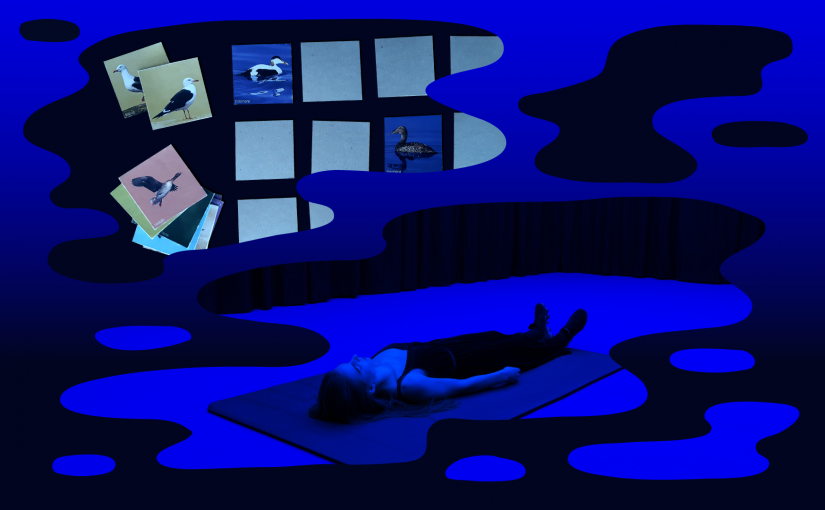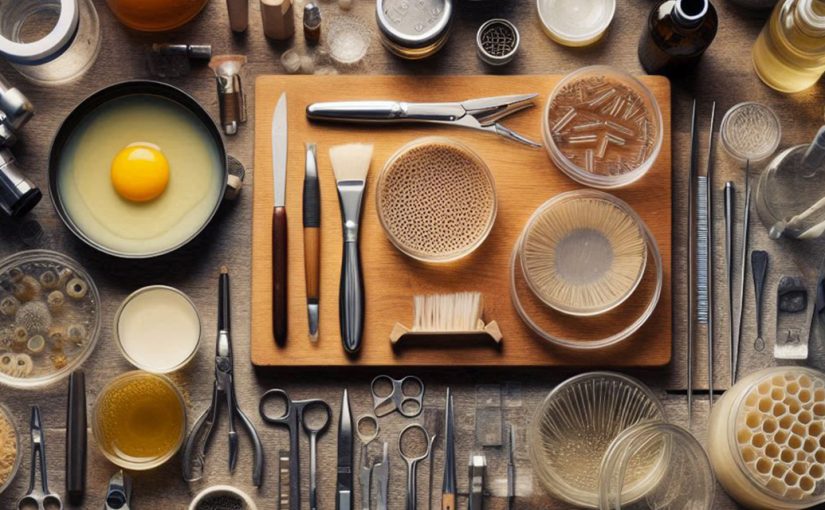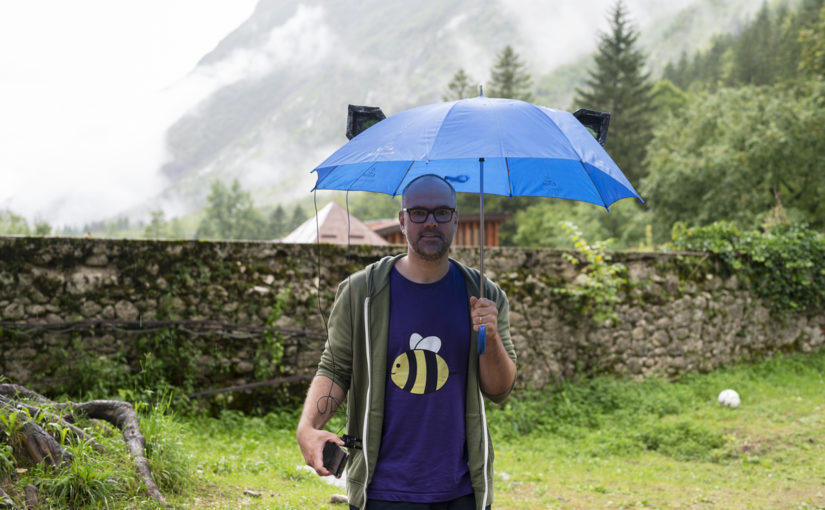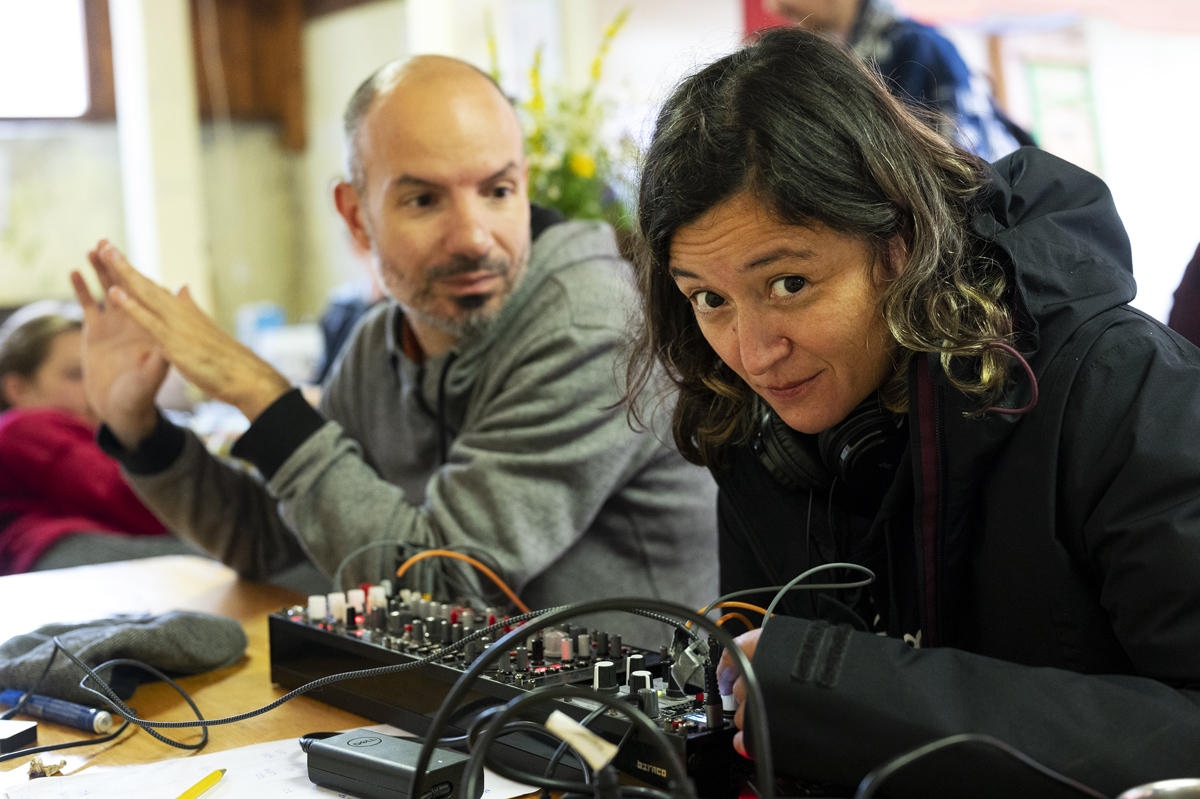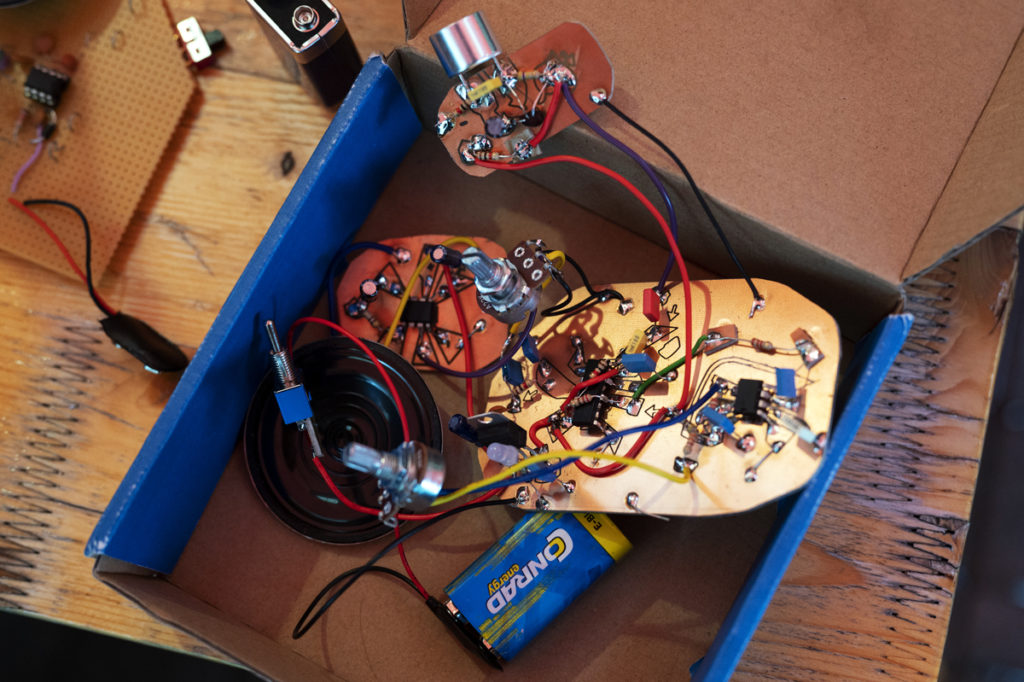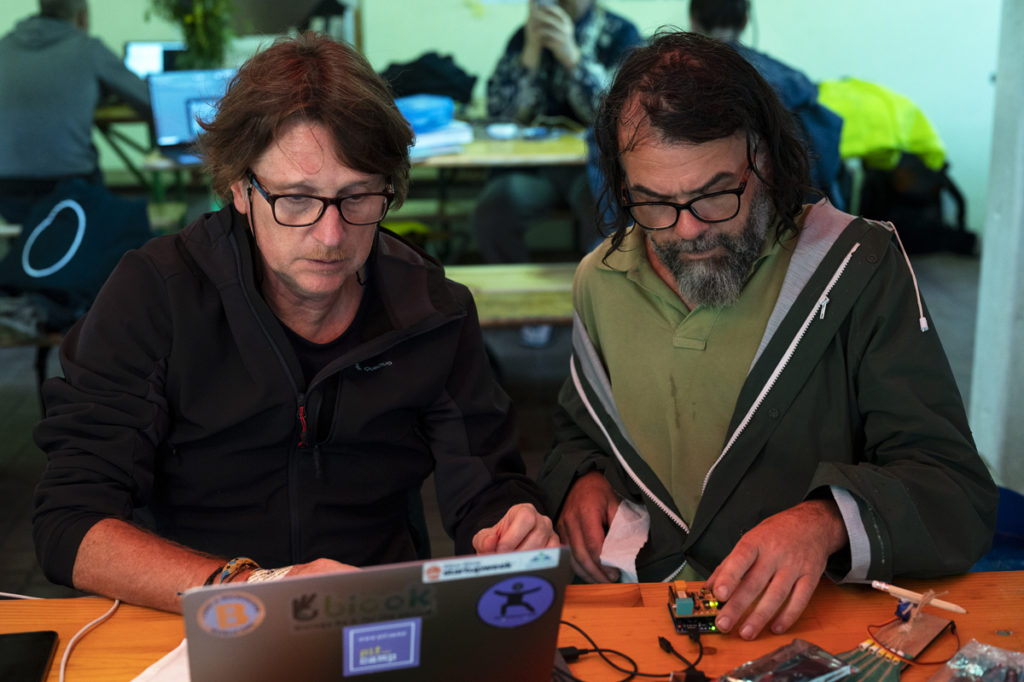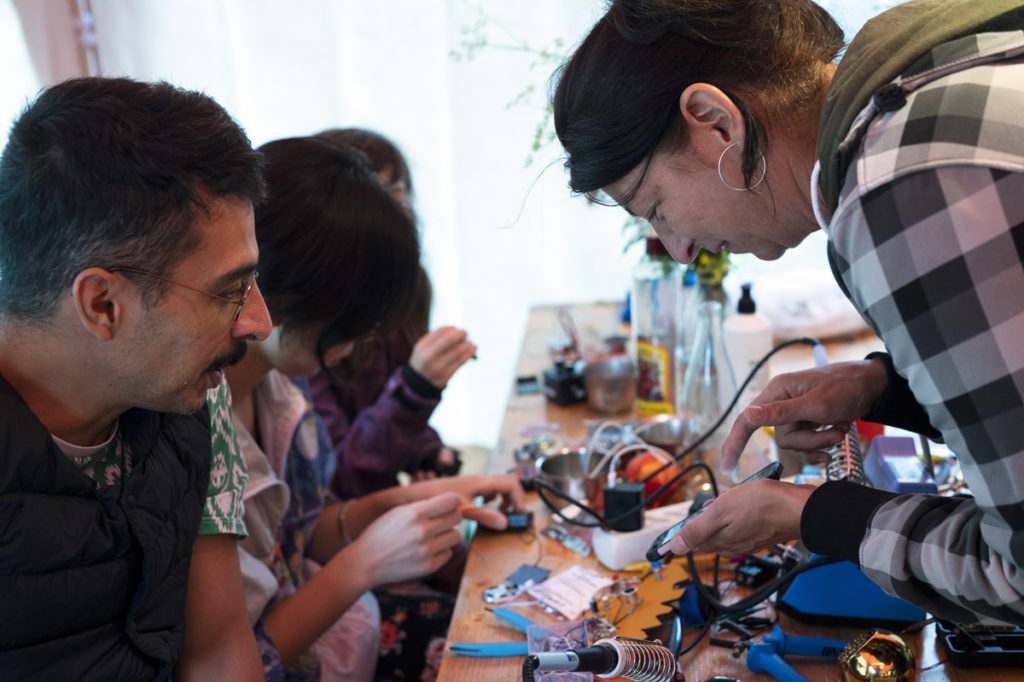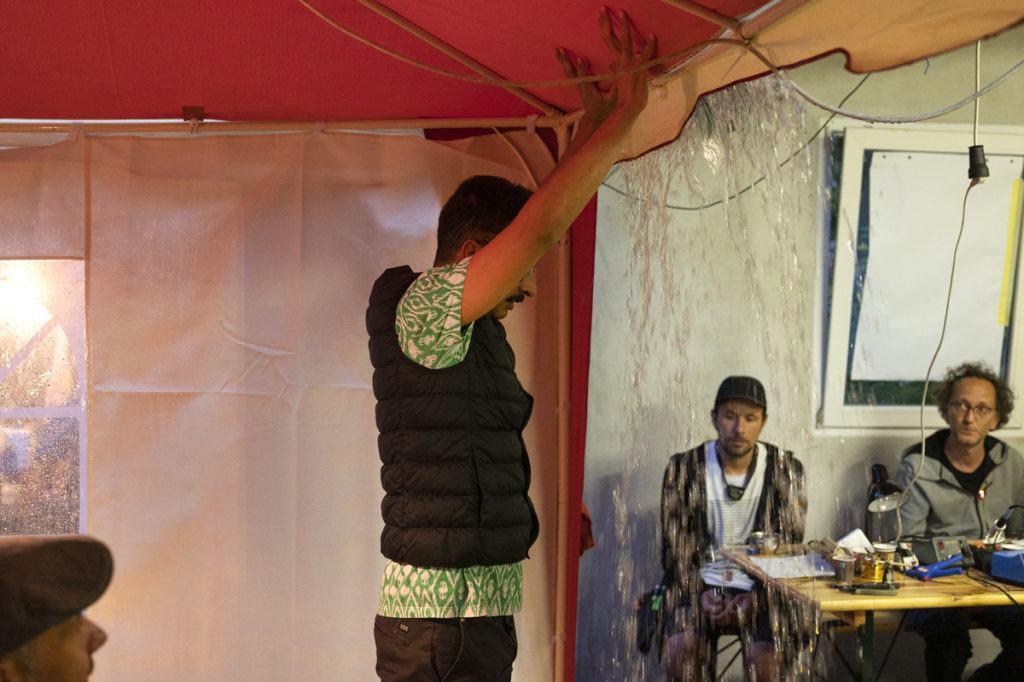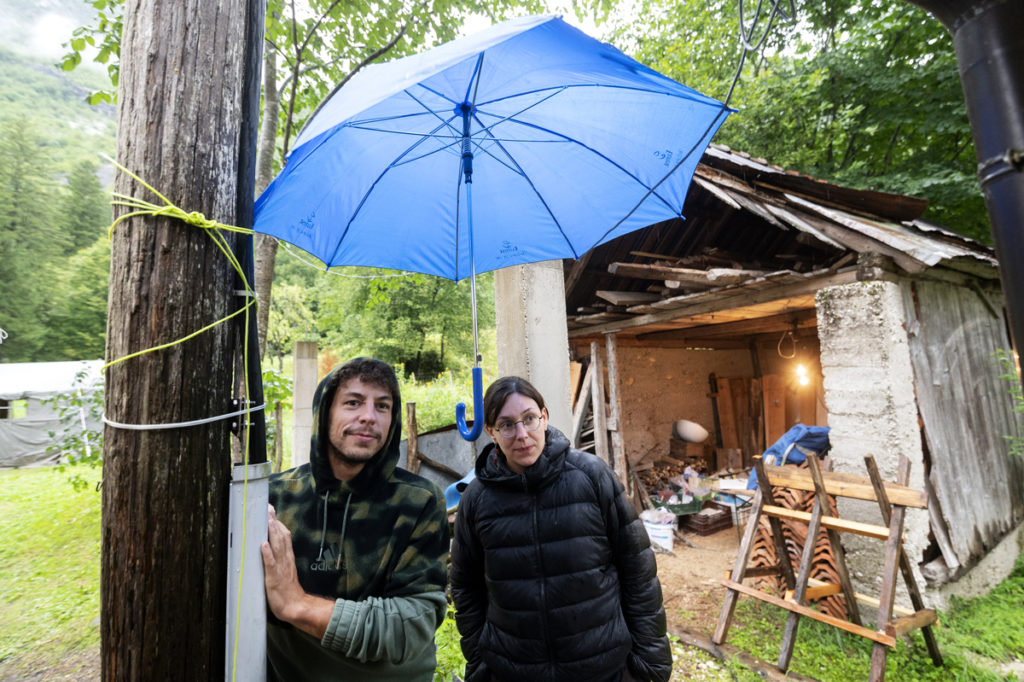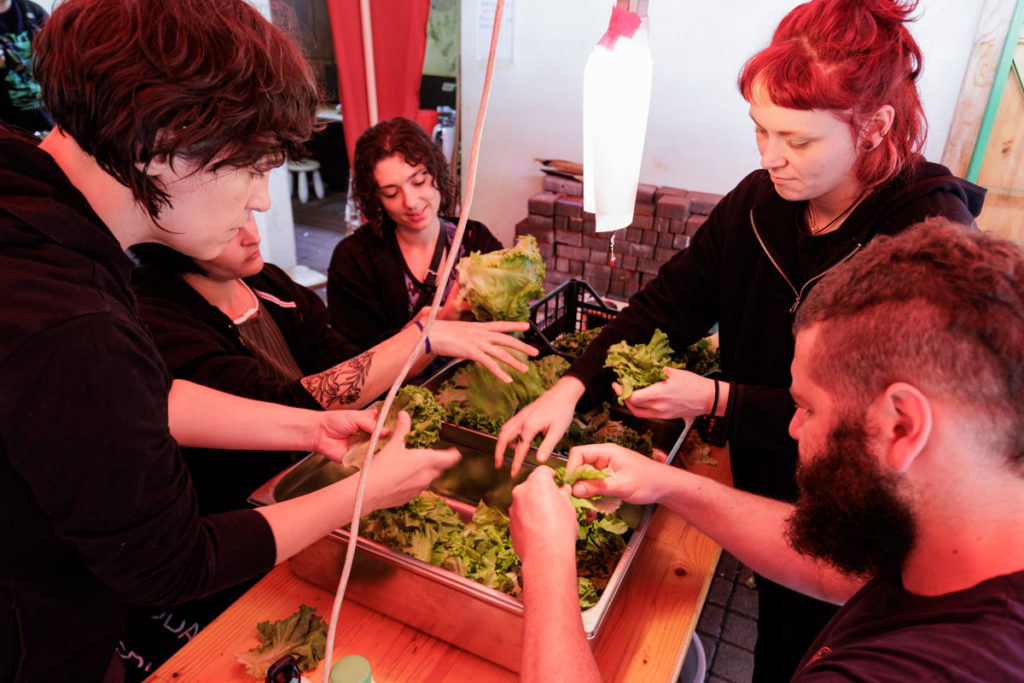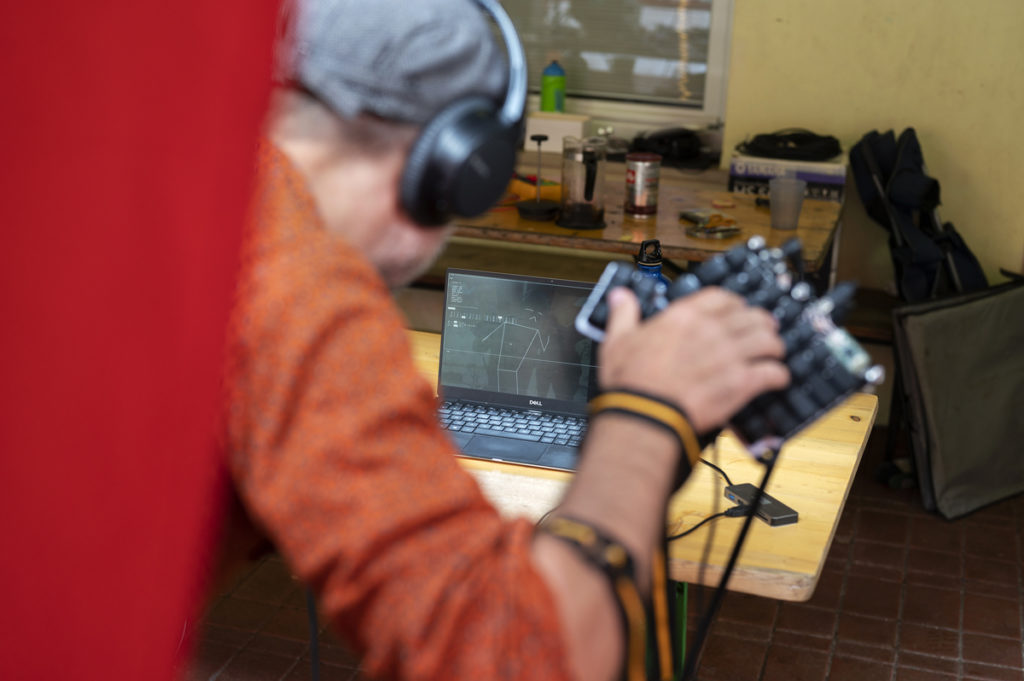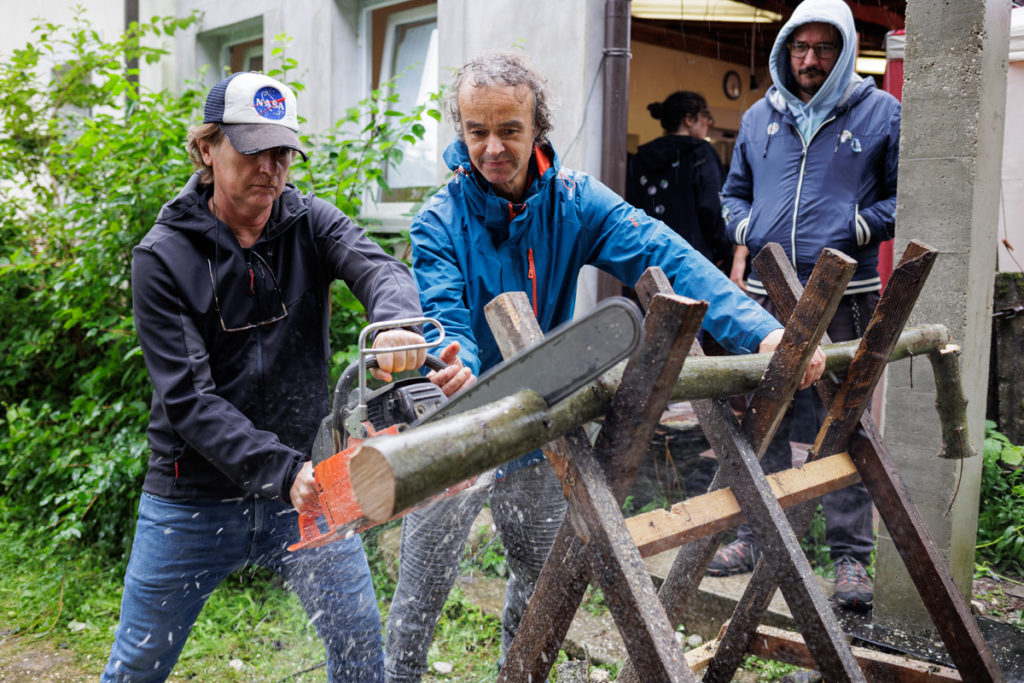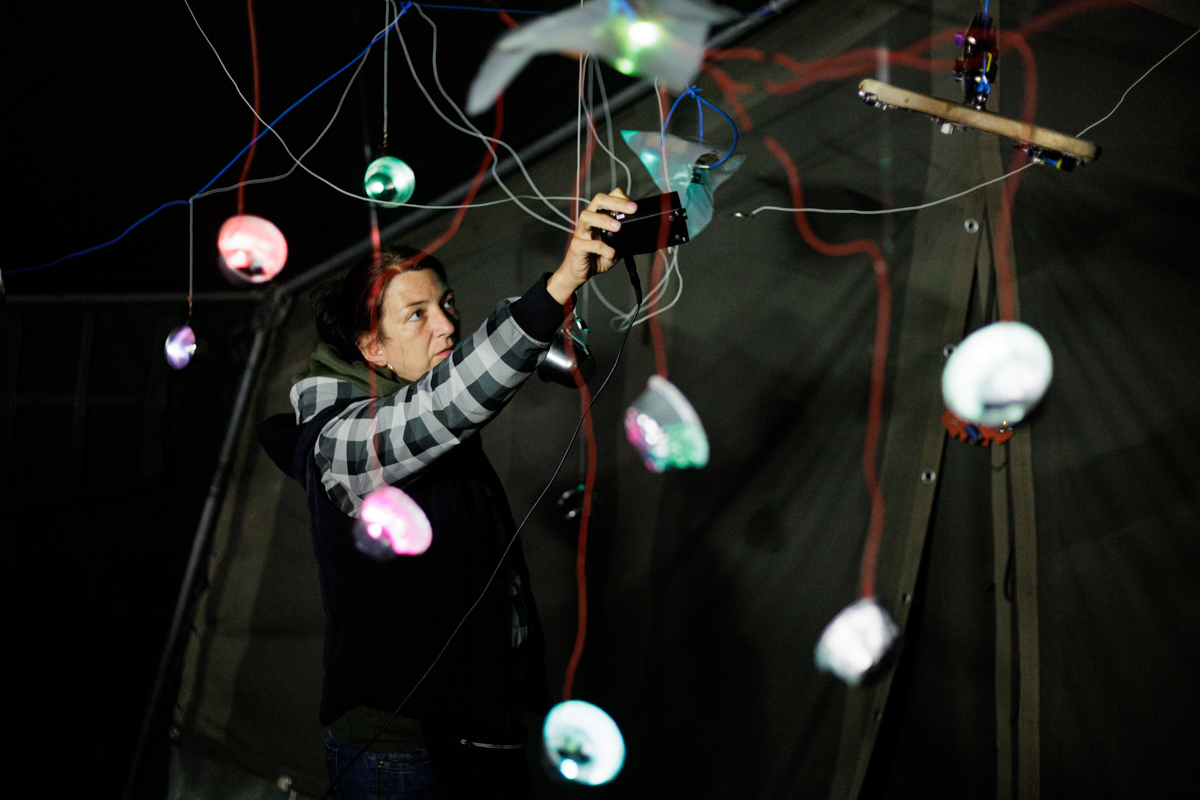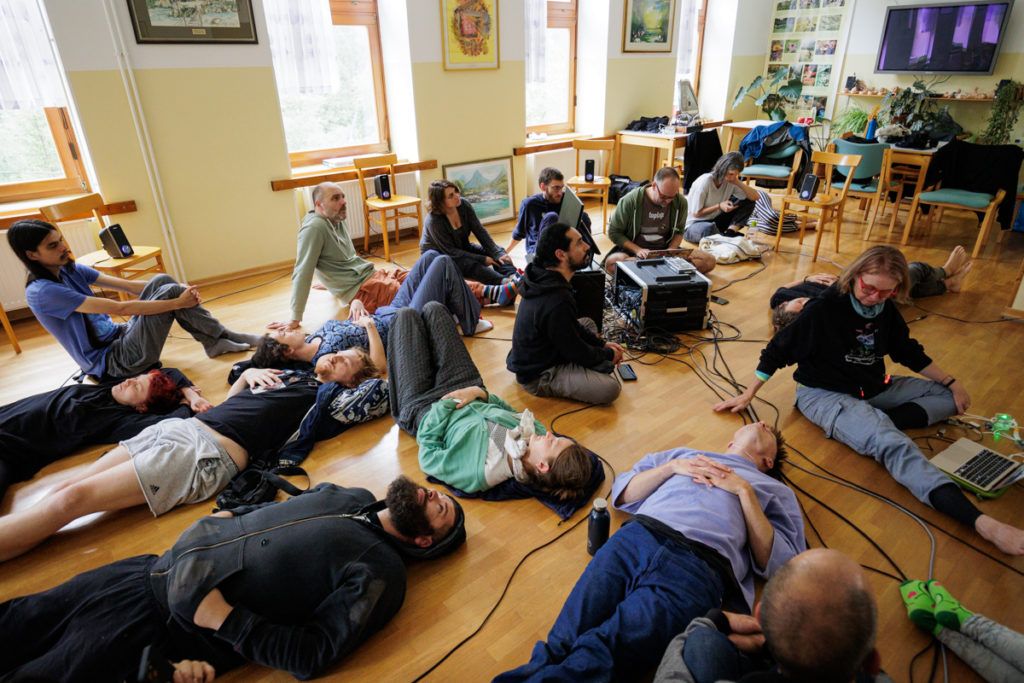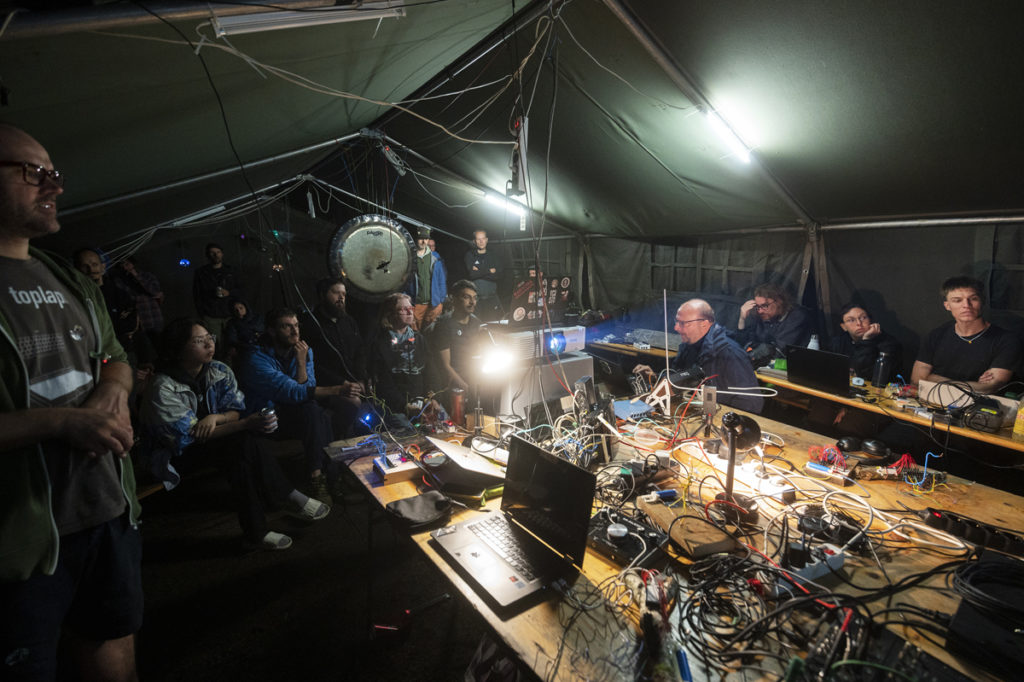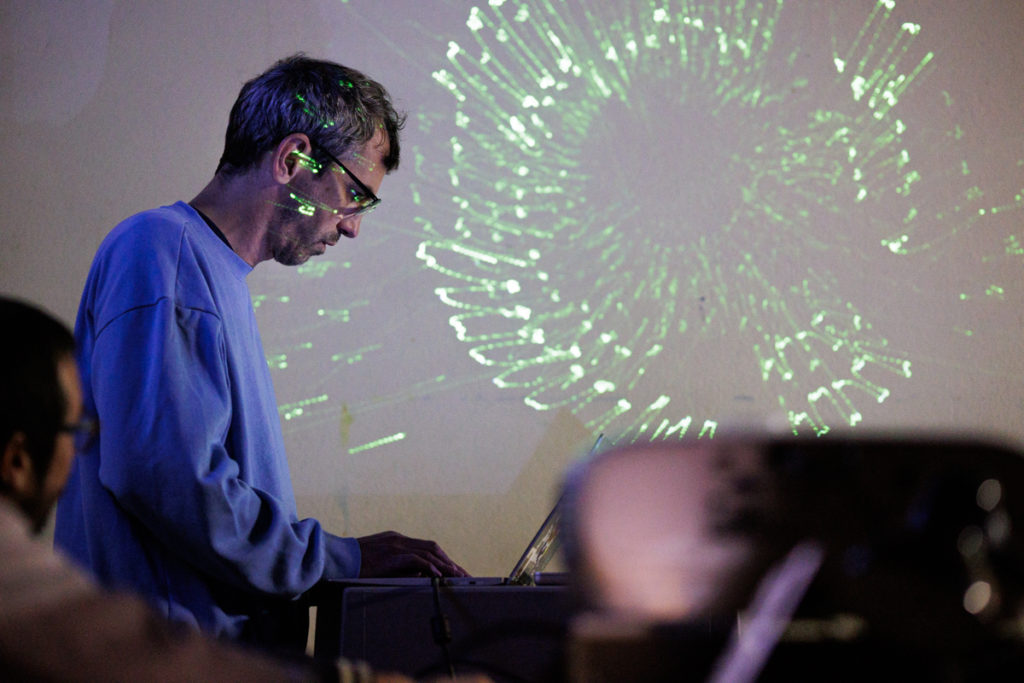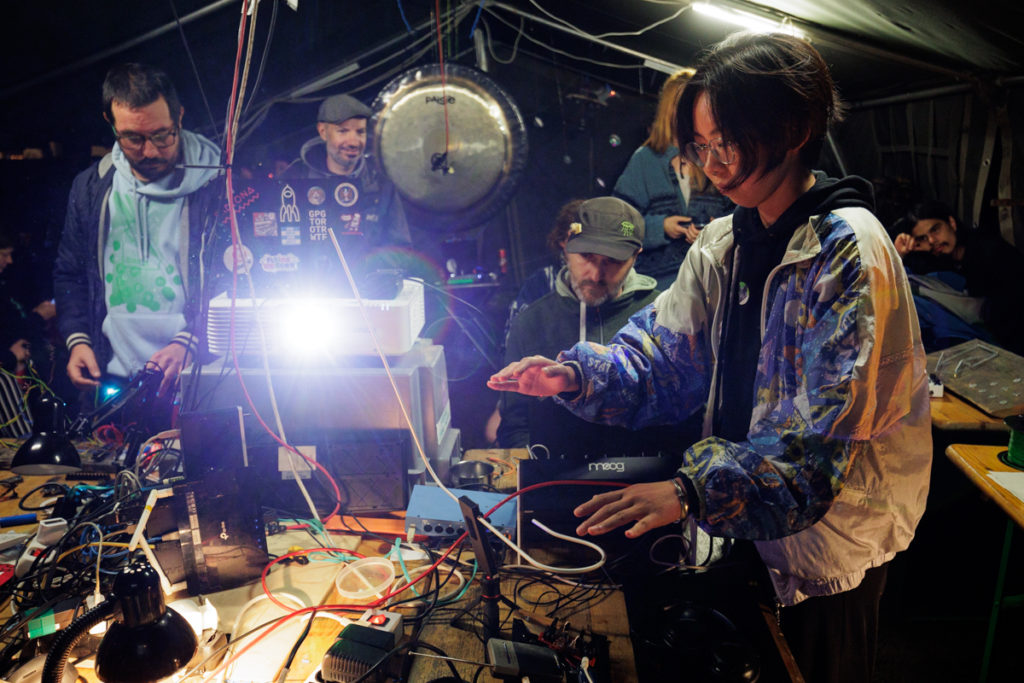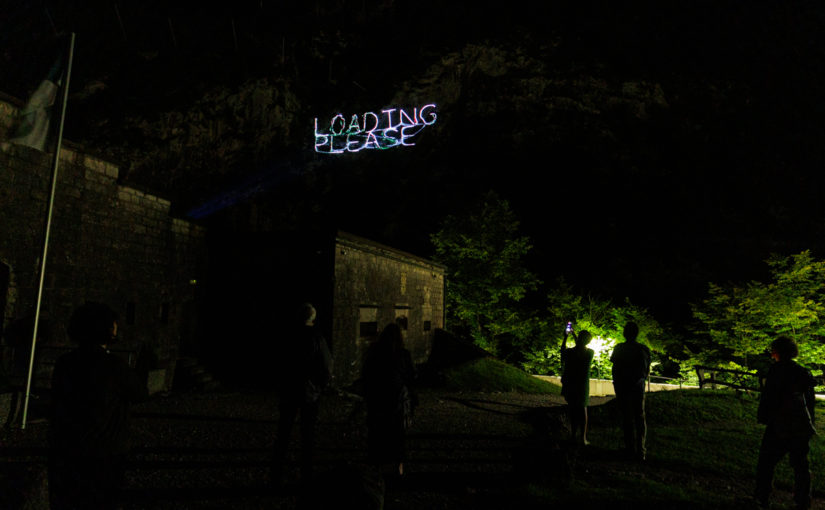Tamara Lašič Jurković is an interdisciplinary designer, researcher and teaching assistant specializing in design theory, who plans to host a workshop PIFcamp to create a local version of the collaborative game Left With a Memory, present her project Hacked Meditation and refine her PhD topic proposal. All three endeavours—the PhD topic and the two projects—are rooted in posthumanist theory in terms of moving beyond human-centered design approaches, challenging anthropocentric beliefs, recognizing the interconnectedness of the “web of life” and comprehending human dependence on natural ecosystems and other biotic organisms. Hacked Meditation is a guided audio meditation that questions the exclusivity and definition of the human being by exploring the microbial life within and outside our bodies. Left With a Memory is a collaborative, educational memory game that highlights the surprising number of red-listed endangered species resulting from the destructiveness of human activity. Lastly, for her PhD, Tamara aims to explore how strategic board game development methods can be implemented in the posthumanist design process and whether board games can be an effective teaching tool for introducing the posthumanist perspective in design.
RIP Your Tech. A Bioplastic Send-Off Party! by Sabina Suru & Andrei Tudose
Have you ever held onto a piece of technology long after its prime? A phone that is too old to even connect to the internet, a cassette player lost in the digital age, a gadget gathering dust in a forgotten drawer, or a film camera received from a friend which just doesn’t function anymore? These relics whisper stories of our ever-evolving relationship with the digital world.
This summer at PIFcamp, Marginal via visual artist Sabina Suru and curator Andrei Tudose, invite you
to Places of Care, to explore these quiet narratives and craft a gentle farewell for our ageing
technologies. The project challenges traditional perceptions of technology and fosters a deeper appreciation for the complex ecosystem it creates, highlighting the importance of care for technology and a shift towards a more responsible approach to resource management in the technological sector and beyond, opening up conversations about the ecological footprint of technology and the need for sustainable practices in its production and disposal.
Oh, speaking of disposal – how do you feel about waste? Not e-waste (well, not just yet), but bio-waste, growing in front of our eyes. Now, imagine transforming this everyday waste into bioplastic, instead of the ever present plastic made of fossil fuel-based chemicals, today’s biggest frown-upon villain.
What is bioplastic, you ask? It’s a material derived from renewable sources like plant starches or vegetable fats, offering a more sustainable alternative to its petroleum-based counterpart. During collaborative working sessions, we’ll get our hands dirty (in a good way!) experimenting with these innovative materials. We’ll make bioplastics from scratch, using everyday materials like agar agar, flour, kitchen scraps and whatever biowaste we’ll stumble upon around the camp.
These materials will become gentle shrouds for your abandoned technologies (please bring some with you!), eco-friendly burial garments which will not only commemorate our cast-off gadgets, but also become the building blocks for a larger installation Sabina is working on. Yap, your e-waste will find its resting place at the Bucharest Technical Museum in October, for the Places of Care exhibition, a testament to our techno-ecology and our possibilities for responsible consumption.
Join us if you wish to:
● Reimagine the afterlife of technology: Give your tech a gentle send-off and explore themes
related to ecology of technology, obsolescence and responsible consumption.
● Embrace new materials: Learn to make bioplastics from sustainable and readily available
ingredients.
● Be part of a collaborative artwork: Contribute to a wider installation displayed at a really cool
museum!
Application for 10th PIFcamp are open!
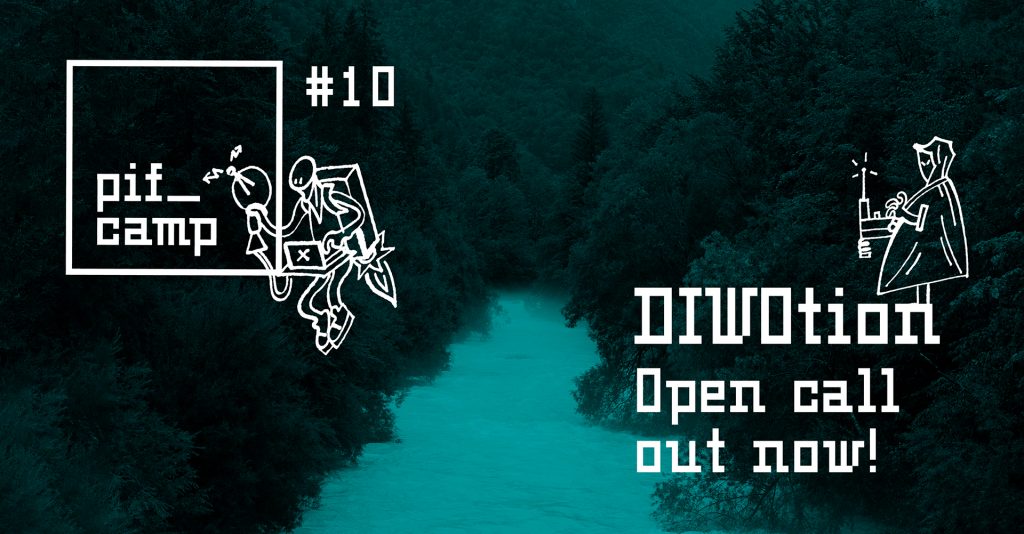
Open call for the festive 10th edition of PIFcamp is out! You can find all the information on how to apply in the APPLY HERE menu section.
Catch the early bird price by applying until March 15th. Open call will be open until middle of April.
Since we are making slight changes in the participation, we kindly ask you to read the description on the webpage or in the form.
We are looking forward to your DIWOtion applications!
PIFtopia throwback
Thank you Videokeks for the vivid PIFtopia memories!
How we learned to live with constant rain //PIFriday
Rainy Thursday was followed by a rainy Friday. PIFtopia thankfully avoided the more serious storms, but owing to the extreme conditions in several regions across Slovenia, the decision had to be made to call off the Open Saturday. The wrap-up of PIFcamp was nevertheless breathing down the PIFparticipants’ necks. So, despite the relentless rain, we witnessed the usual Friday levels of diligence.
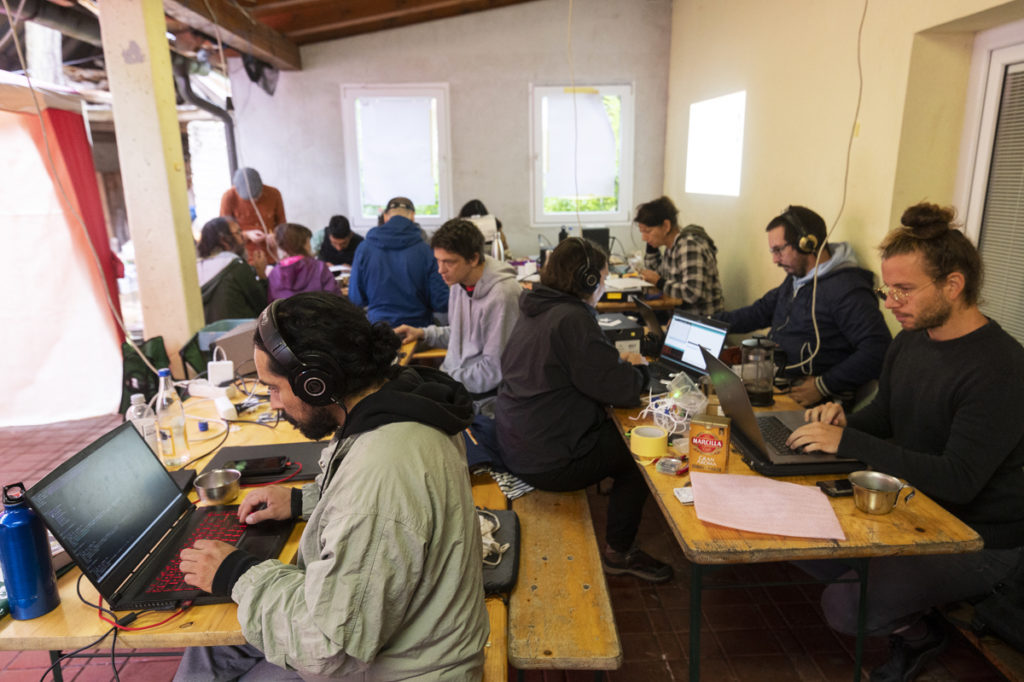
Laurent, whom we have already written about in this year’s PIFlog, decided to start his presentation right after breakfast. He presented his setup, which combines dance and coded music in his performances, to those who hadn’t yet marveled at his (really special!) live coding interface. Free from all PIFproject commitments, he was able to attend workshops, presentations, and jams throughout Friday and Saturday.
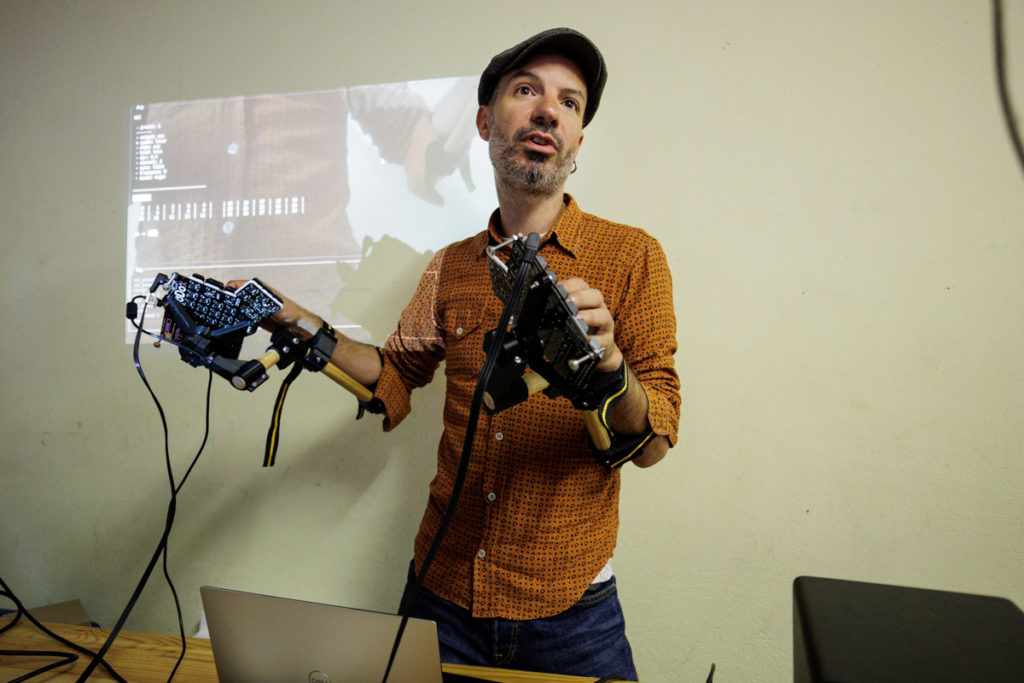
Meanwhile, Maya Minder‘s plans to research and produce a bacterial field guide were interrupted by the rainy weather during the week, so she has arranged a presentation of one of her past projects under the canopy – a workshop on making power cells from microbes, which she is developing and running in collaboration with Miranda Moss. Kraut Source Energy is well documented on the Hackteria wiki, where you can also download the instructions for producing energy from various stinky substances like sauerkraut, urine, or mud.

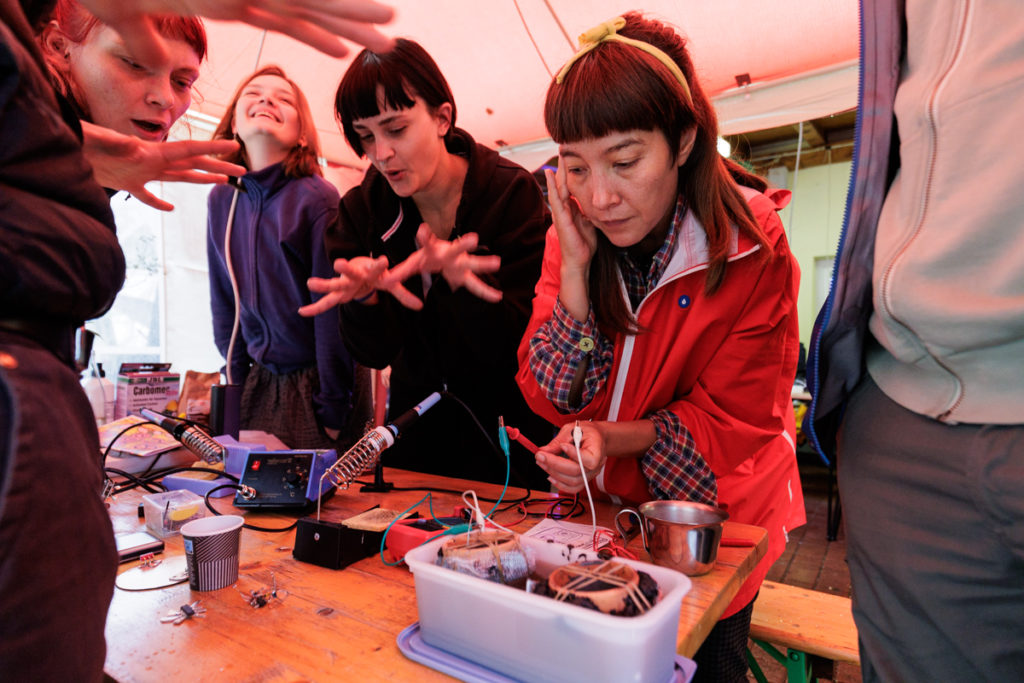
Already before lunch, we noticed certain indications that noise would dominate Friday as far as sound is concerned. Dan Xu invited the PIFlars to build kraakdoos, noise-making experimental instruments developed by Michel Waisvisz in the 1970s at Amsterdam’s STEIM, under the slogan “Let’s make some noizzzeee”.
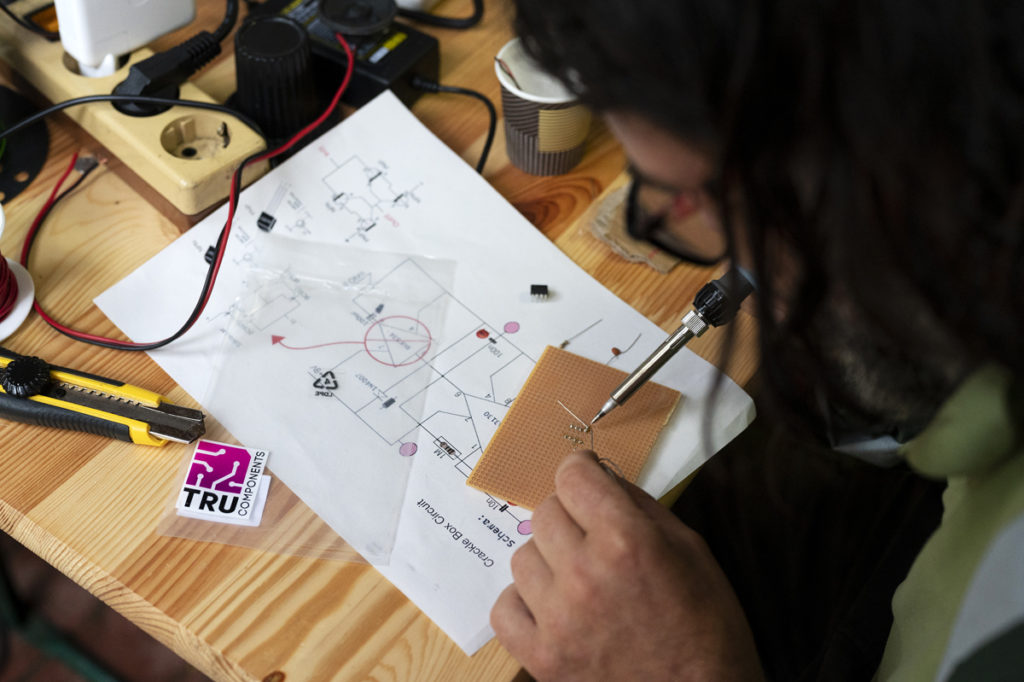

The crackle box, as the name of this simple instrument translates from Dutch, is played simply by touching it, which neatly connects Dana’s workshop with the activity that was (still) going on under the tent in the meantime. Participants in Rob’s workshop continued to build instruments from the Networked Touch series. More on this in the report from Saturday’s events.
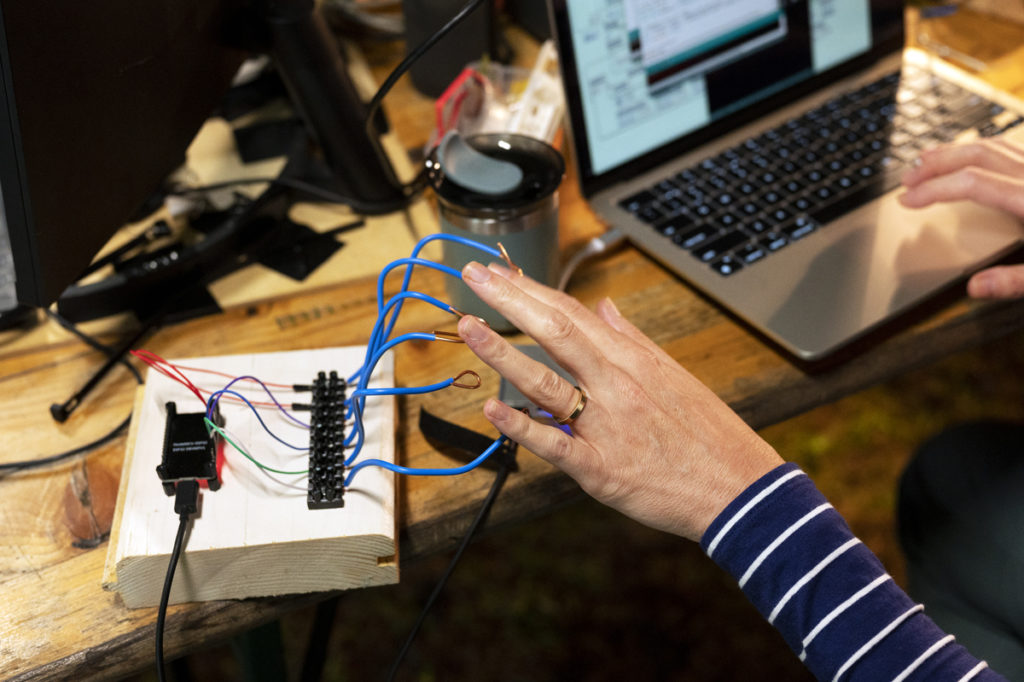
After a spot-on lunch (fish and potato salad), a few of the curious gathered for Nejc‘s presentation on creating animations with artificial intelligence. Nejc presented his practice and shared a number of other interesting facts, such as his fascination with solar punk, while also briefing the audience on his project in progress, a short experimental generative animated film with the working title First We Must Listen to the Trees, in which he explores social situations in relation to the environment and the ecosystem, as well as coexistent and sustainable ways of living.
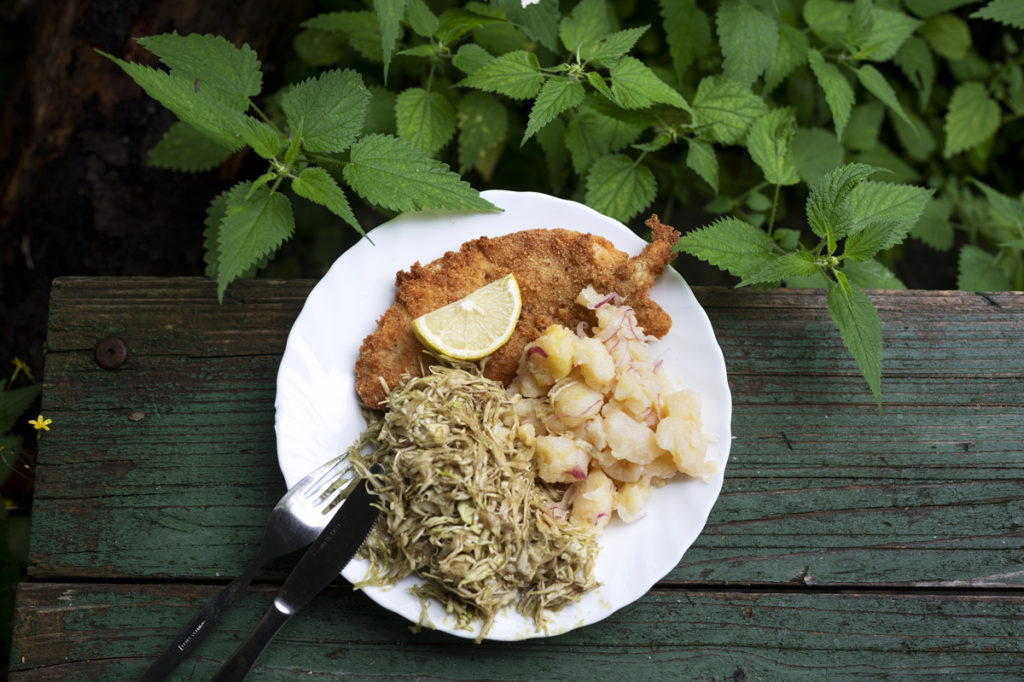

Before it got dark in the PIFcamp, we enjoyed two more artist talks on the terrace: first, the audience was entertained by Jani Pirnat, who is a curator at Ljubljana’s Vžigalica Gallery outside of PIFtopia, and also one of our favourite Slovenian contemporary artists at our week-long gatherings in Soča. Jani presented his two previous PIFprojects, Peasant Resistance and Rock’n’roll. While the former tasted internet fame for a few days, the latter – a cement mixer transformed into a disco ball with a rolling stone inside – only amused PIFlars so far. But judging by the audience’s reaction, it is likely that it will also be presented to an outside public soon.
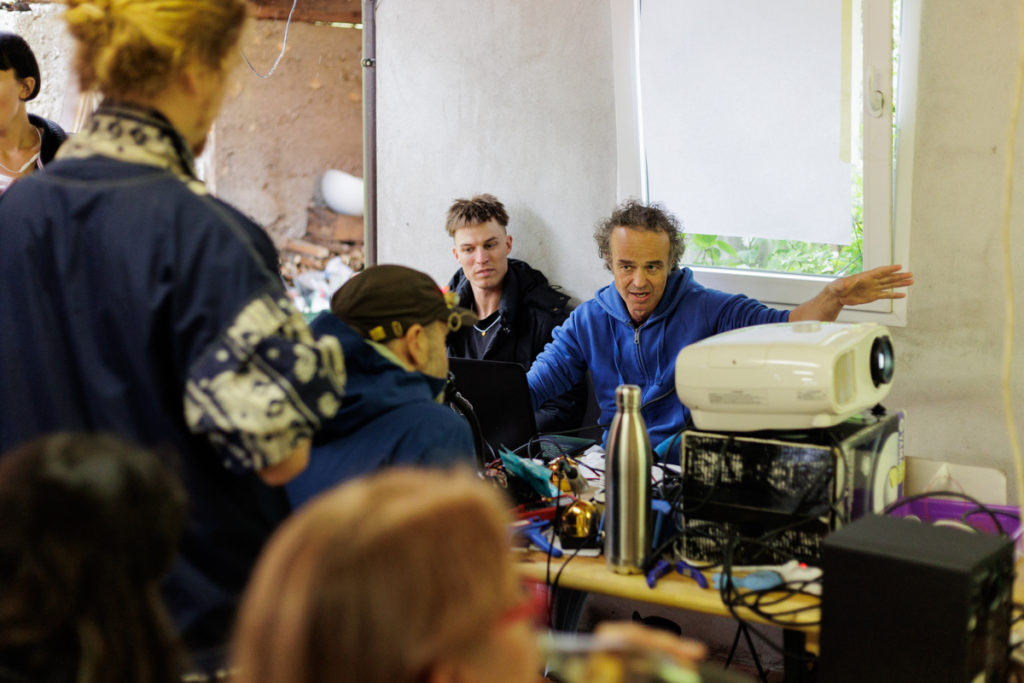
Next, Michael Candy, this year’s PIFresident, presented previous projects and delighted the audience with infectious joy for building robots and stories from previous artistic residencies. We caught a video of Ether Antenna, a work created during a residency at the Robotics Association of Nepal (RAN). This narrative short film, beautifully edited to music by Pauline Anne Strom, is based on Buddhist tales, with robots, of course, performing all parts. Ah, yes, and there’s a PIFlog recommendation, too: if you’re in Ljubljana in September, don’t miss Michael’s installation as part of the autumn extension of the Lighting Guerrilla festival.
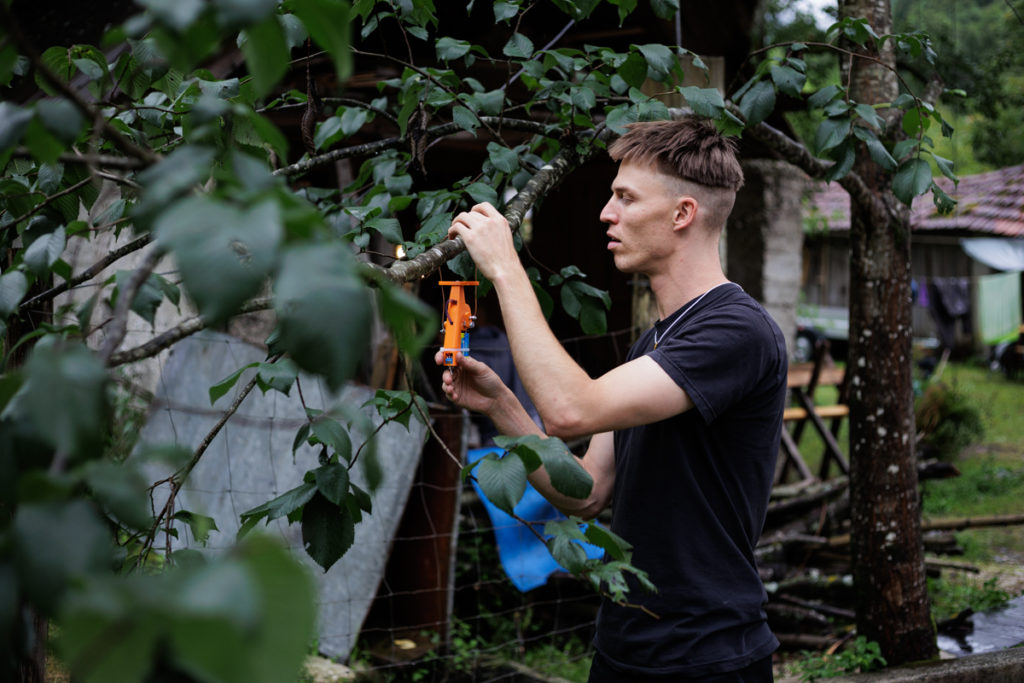
Friday night was spent mostly draining the canopies and tent wings, but of course not without additional soundscapes that complemented and occasionally overpowered the raindrops – from the noise jams to the terrace party, there’s room for everyone at PIFtopia.
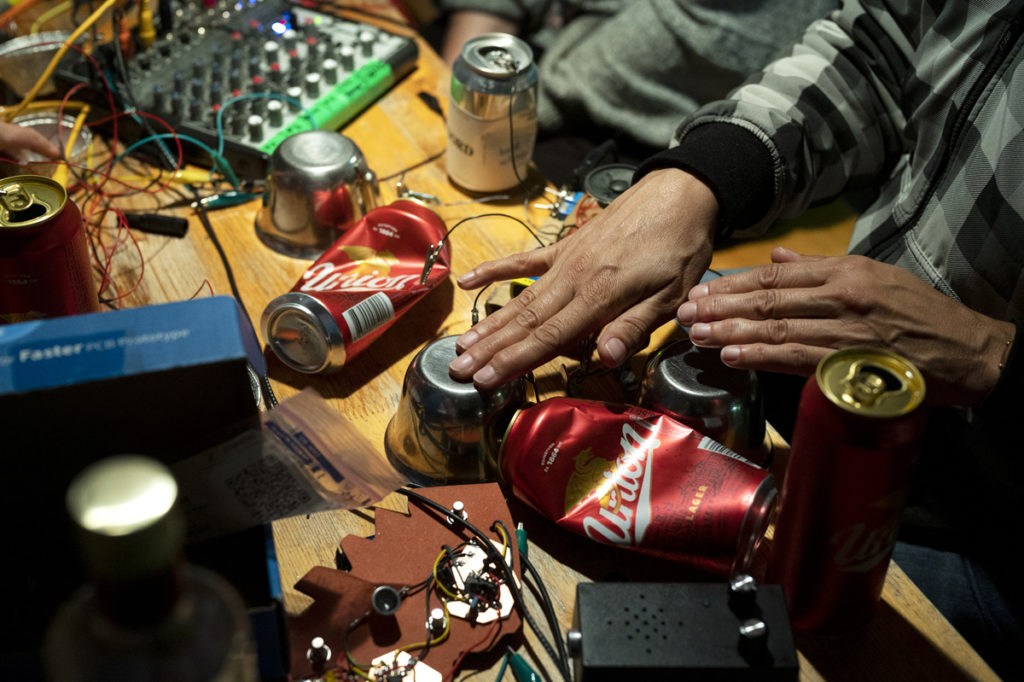
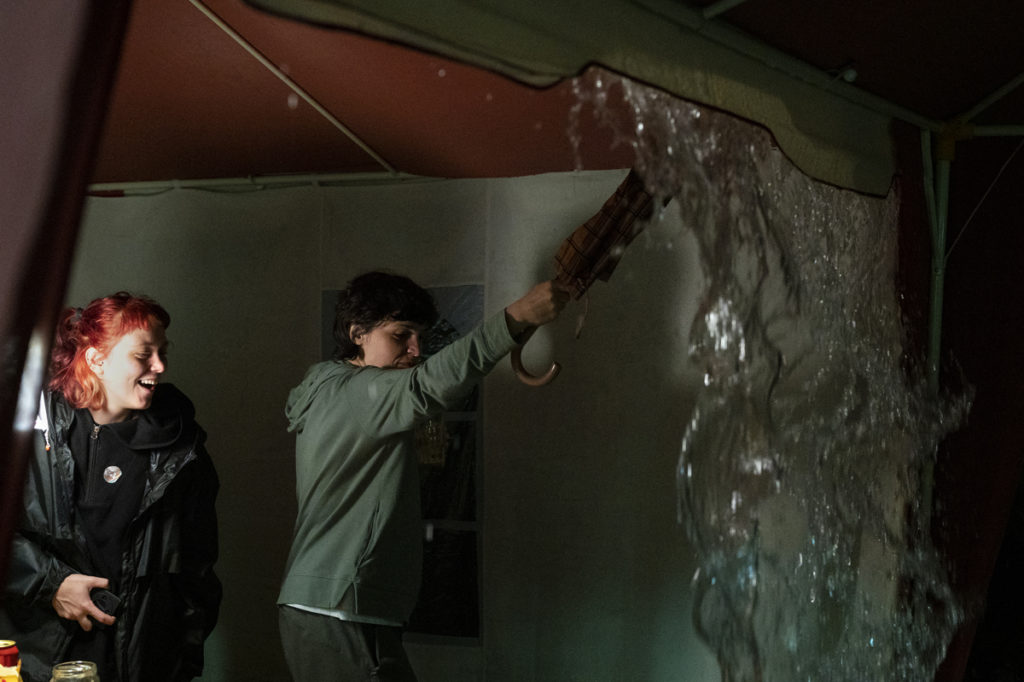
Sunday’s photo dump
Workshop on workshop on workshop //PIFthursday
As you might have guessed from the title of this post, Thursday’s timetable was filled with workshops. Even though we really try hard to deliver news from PIFcamp on time, we are experiencing a minor setback, which is as much due to the fact there was a lot going on as it is to the gargantuan amounts of rain yesterday. There’s only so many dry working spaces when the PIFlake starts to form. However, this did not completely spoil the participants’ plans for the workshops. Shortly after breakfast, the first in the series of Touch Network workshops took place – Meta’s brooches and other decorations making workshop with LEDs. Also, one of the most popular PIFworkshops ever.
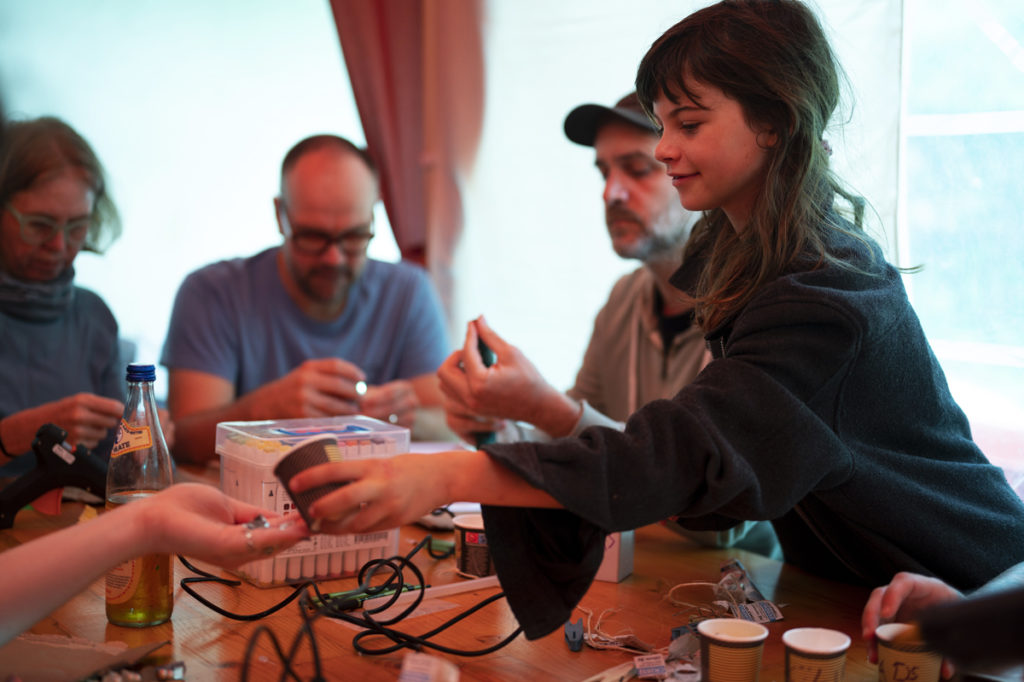
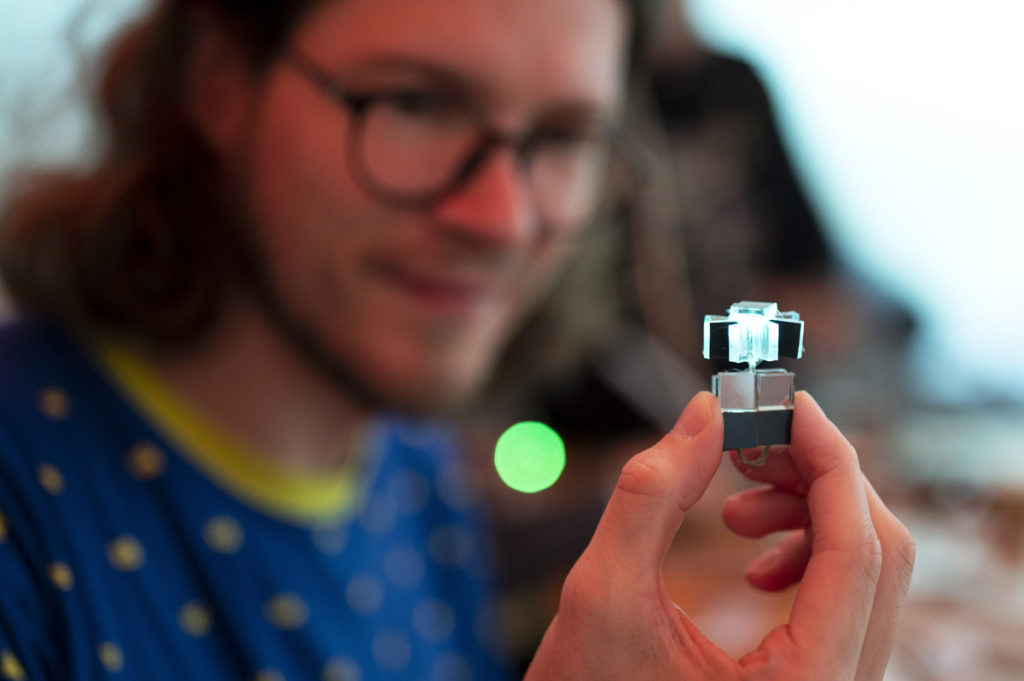
Meanwhile, Rob was in the tent preparing the presentation of the second workshop in the Touch Networks series, a workshop on making experimental musical instruments. After an introductory tech explanation, the participants went on a quest to find suitable bases for their instruments. Once they were satisfied with their findings, they started to upgrade the planks and logs into touch-sensitive musical instruments that send messages to Rob’s SuperCollider via the OSC protocol.
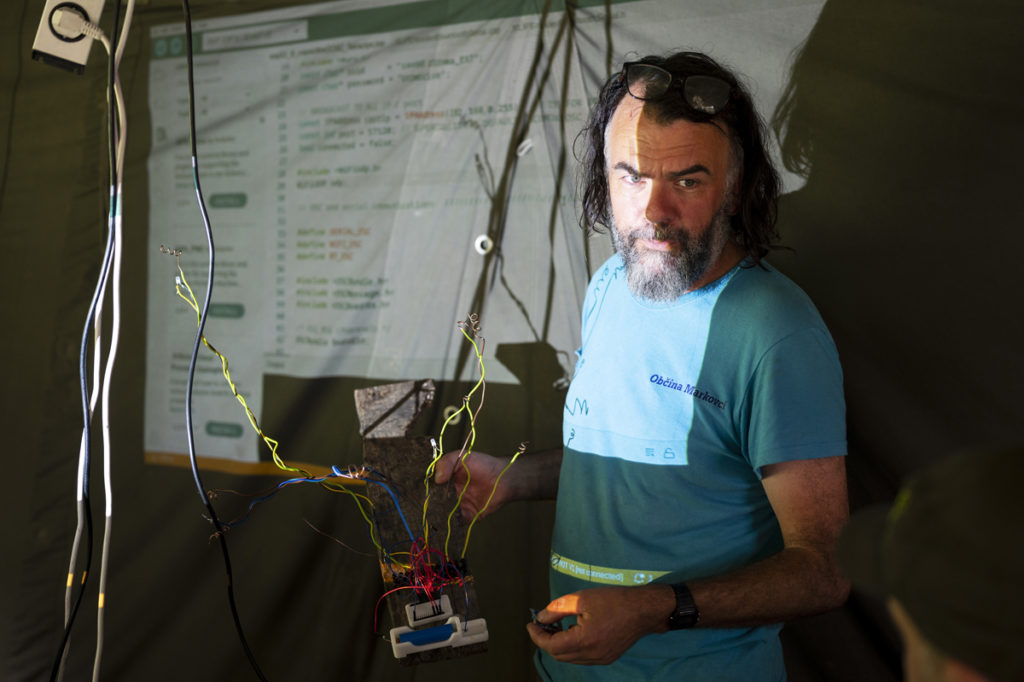
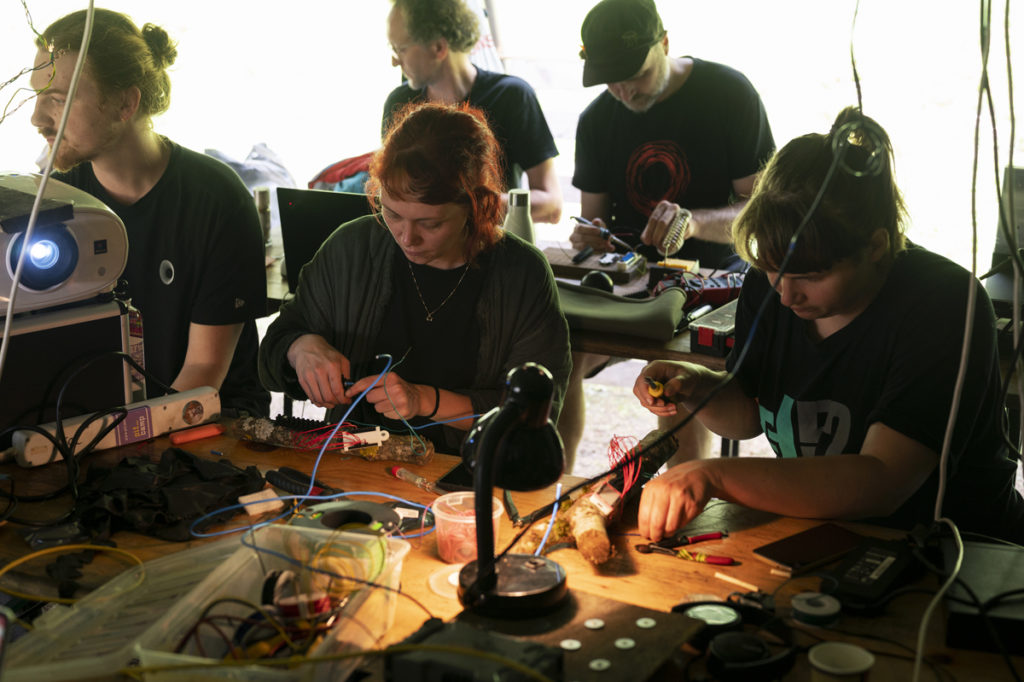
Simultaneously, the Instant Party workshop by Lina Bautista was taking place on the terrace. She introduced the participants to live coded music, explained the core principles of live coding and talked about the Tidal Cycles environment, which is one of the most popular tools among musician-coders. The practical part of the workshop followed. Participants experimented with live coding in MiniTidal and (for an instant) experienced collaborative coding using Estuary, a browser-based environment. As Alicia enthusiastically explained, the best feature of this collaborative coding tool is that it synchronizes the timing of all the participants, making it the ideal solution for remote participatory coding.
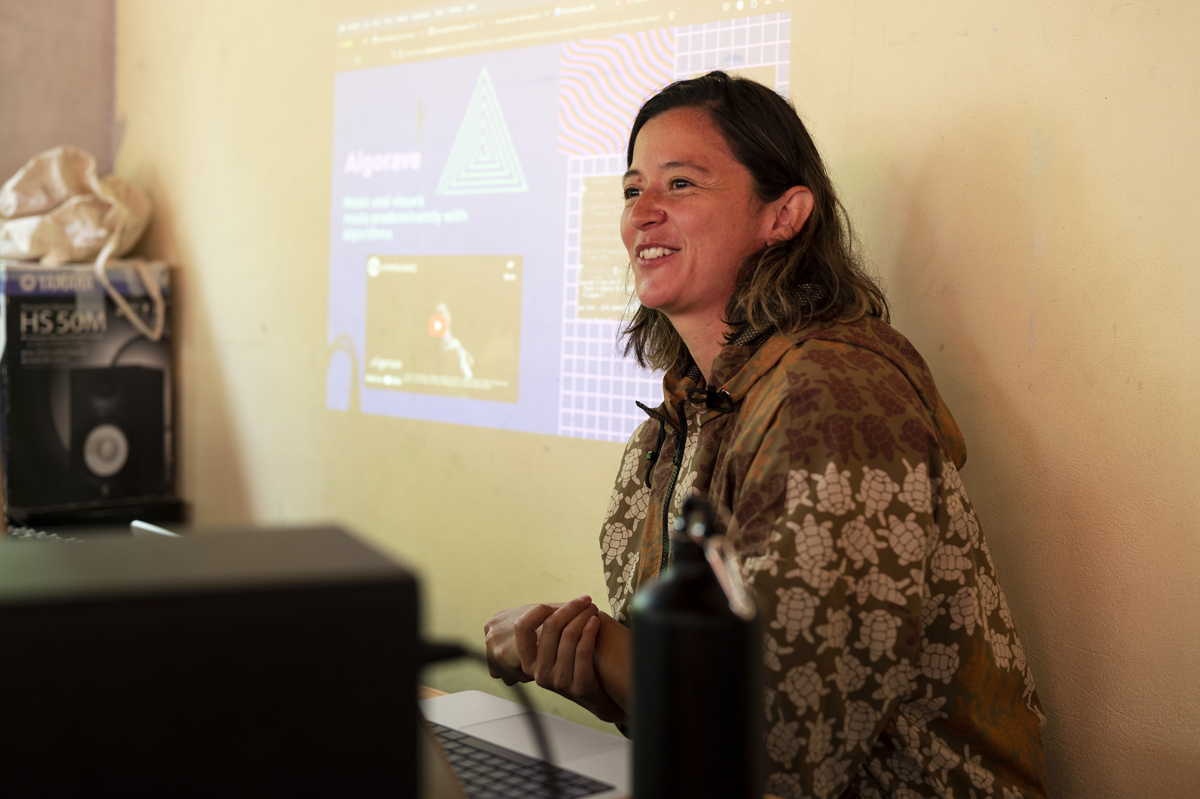
We also talked to one of the attendees, Julia, who had a great time during Lina’s workshop, and particularly remembered her saying that the whole point of live coding music is to have fun. She says that the workshop lived up to its name as it offered instant fun. On the spot, we also caught Lina’s excellent explanation of another core principle of live coding – it’s not just about sharing the screen (to quote one of the points of the manifesto), but about sharing in the broadest sense. By giving listeners or viewers a behind the scenes insight into the process, we allow them to copy the code and play our song or set themselves.
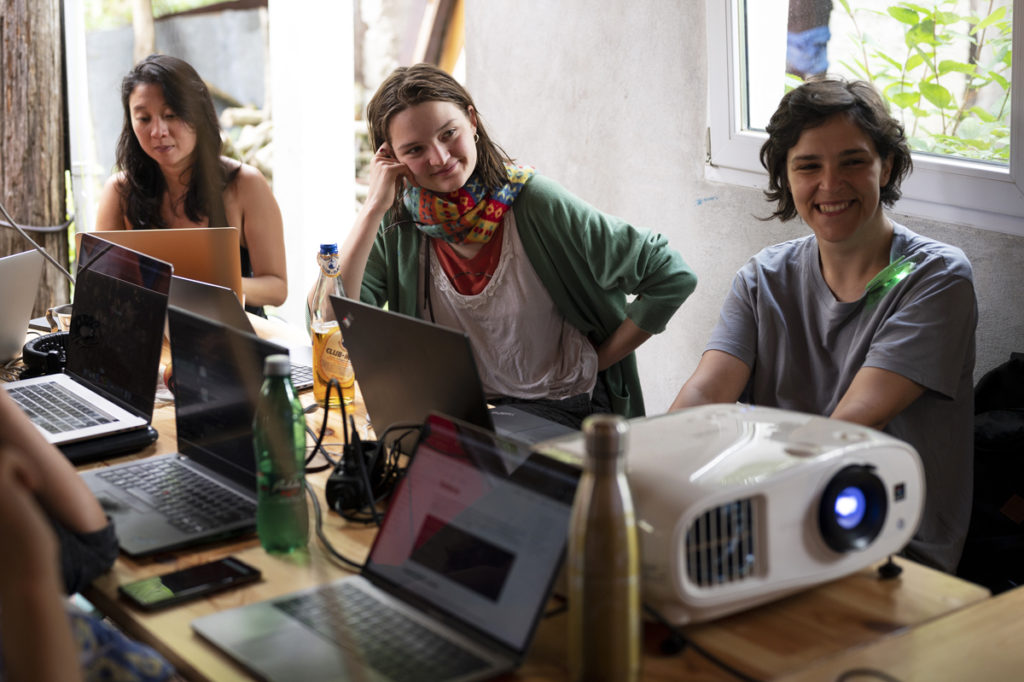
Under the tent, Rob’s workshop was gradually joined by a workshop by the Oscilloscope Music duo, about whom we have already written extensively in the PIFwednesday post. As expected after their amazing AV show on Wednesday, their workshop attracted quite an audience. The participants first learned the basics of safely handling lasers, familiarized themselves with Hansi’s and Chris’s set-up and software, and then tried their hand at laser visualizations.
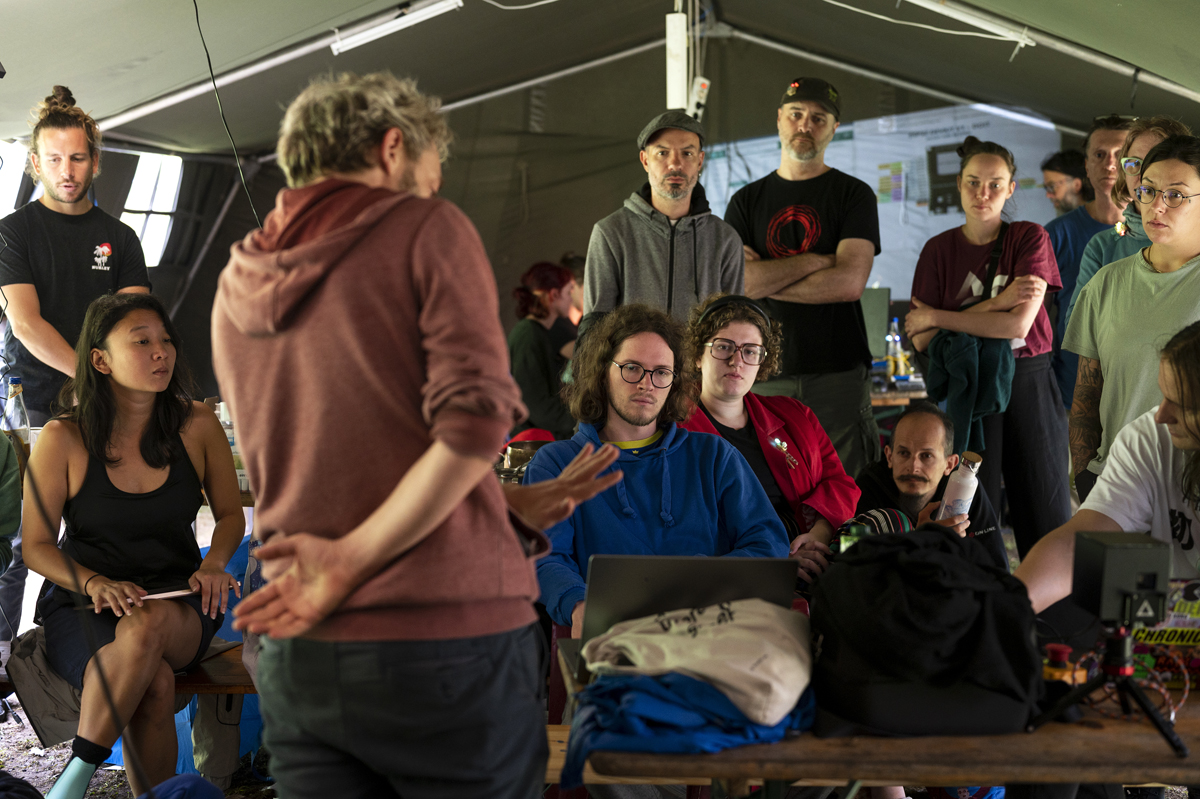
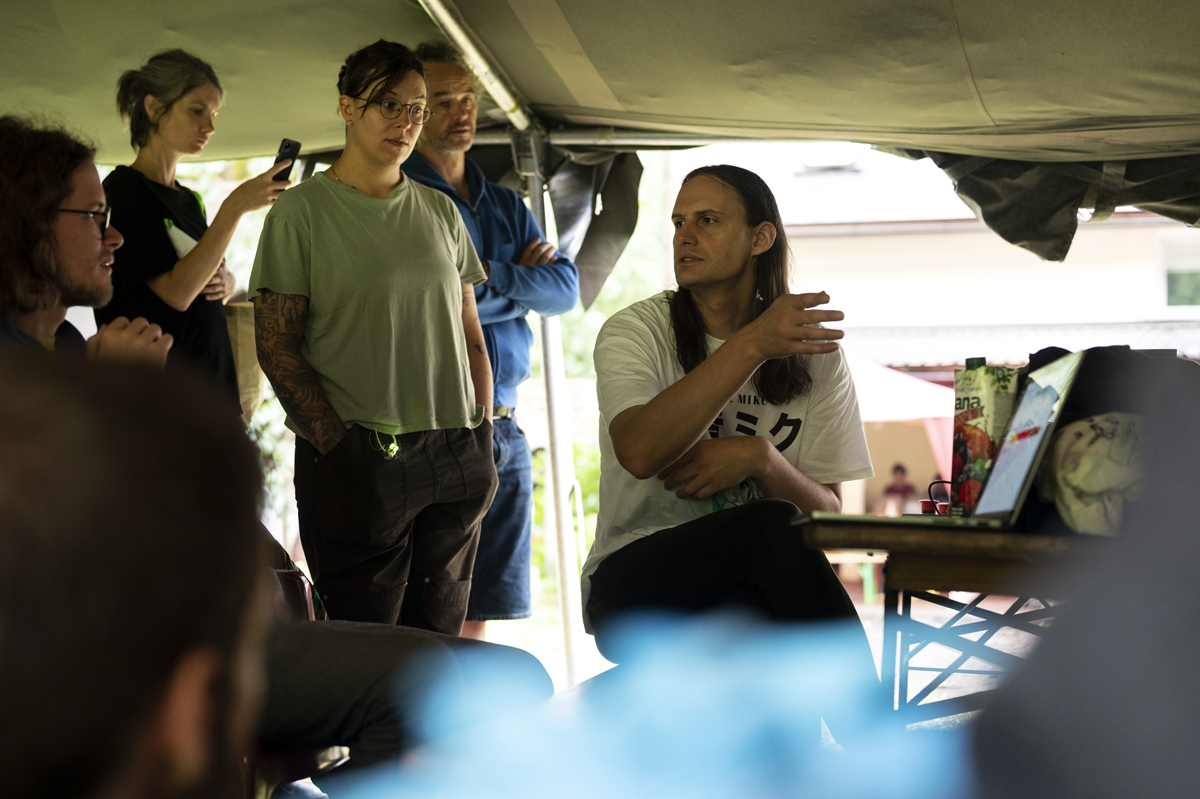
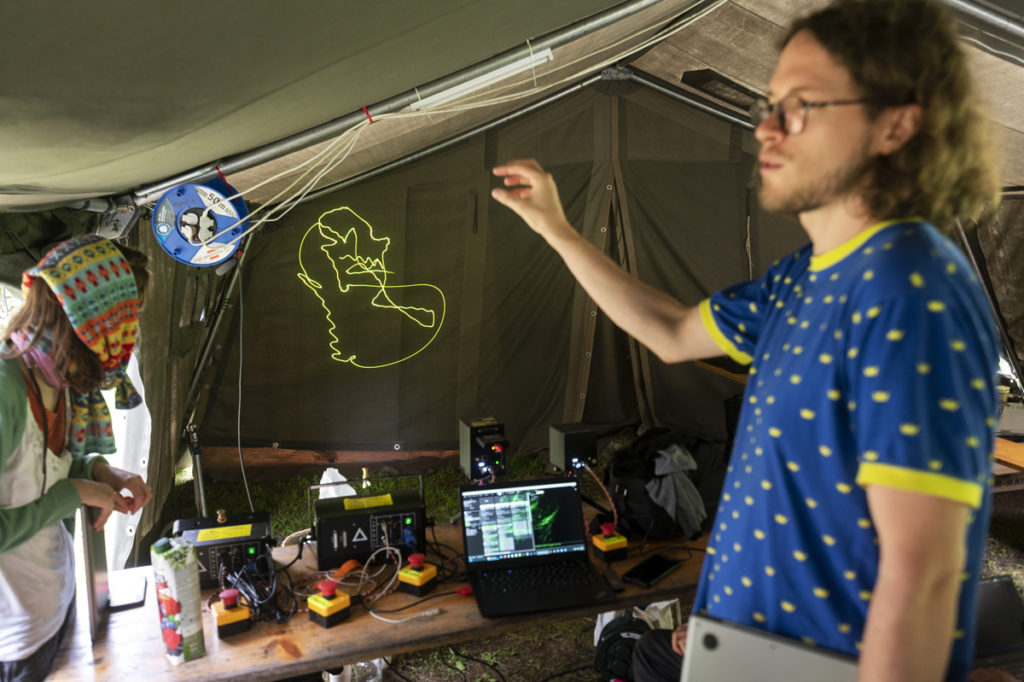
After lunch, a group of anything-food-related enthusiasts gathered at the other side of the PIFcamp for coffee and beetroot cake. Ahac welcomed them in his cosy little corner and invited them to share memories of Dario Cortese, who “really connected PIFcamp with nature”, as our host so aptly put it. They shared stories about this forager and explorer of fermentation, edible wild plants and the surrounding wilderness. If there is one common point among all the stories, it is the fact that everyone who knew him misses Dario. Unfortunately, yours truly had to leave the PIFood corner, and will report on the conversations that took place later in one of our future post.
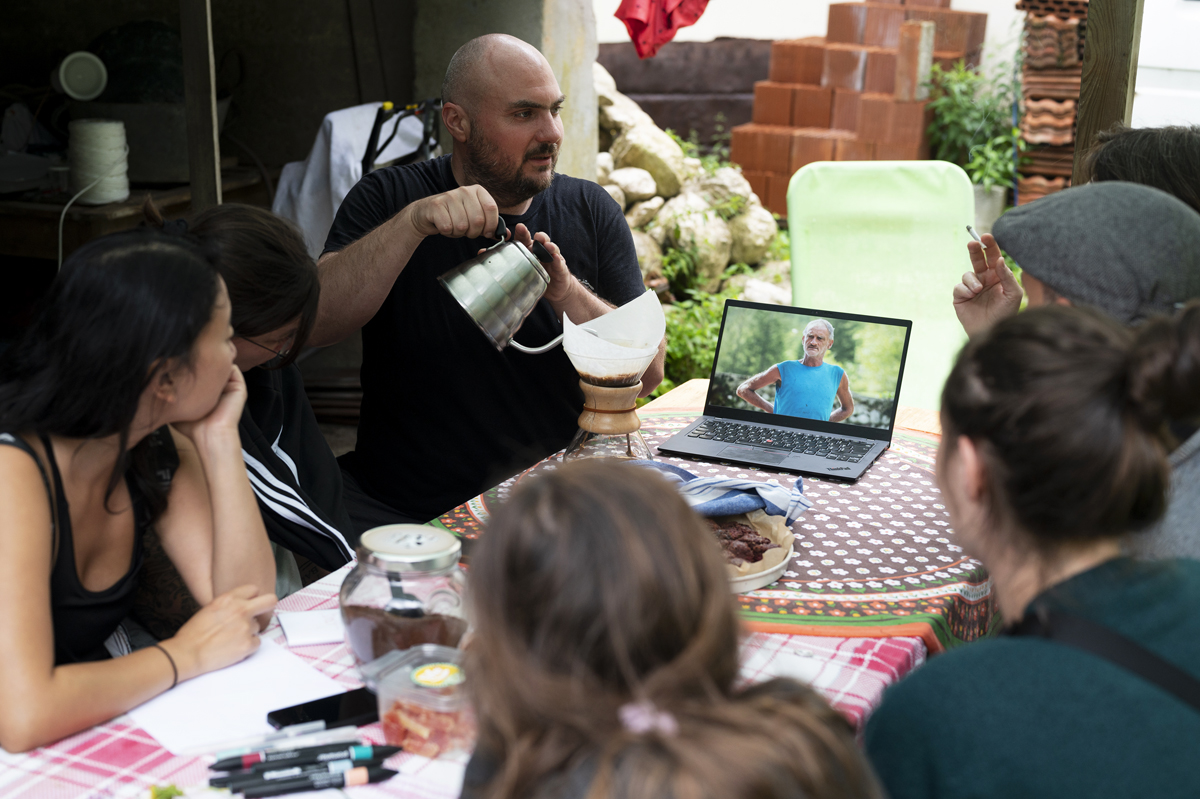
Although it may seem that the PIFlars were unable to progress with their PIFprojects due to the abundance of workshops and rainfall, we can immediately reassure you that this was not the case. If life gives PIFlars the rain, they will come up with a high-tech solution and get on with the job. One of our personal favourites has to be Jelissa’s laptop cover. As often happens at PIFcamp, she didn’t need this solution to move forward with her PIFproject. She teamed up with the artistic duo Swamp_Matter, Eva and Ana Laura, and she was happy to share her coding skills with them. One of the project team members who (like Jelissa) has organically become part of their artistic exploration is Jure, but more on that in the report from Saturday’s presentations. Hint: you’ll be reading about dancing stones.
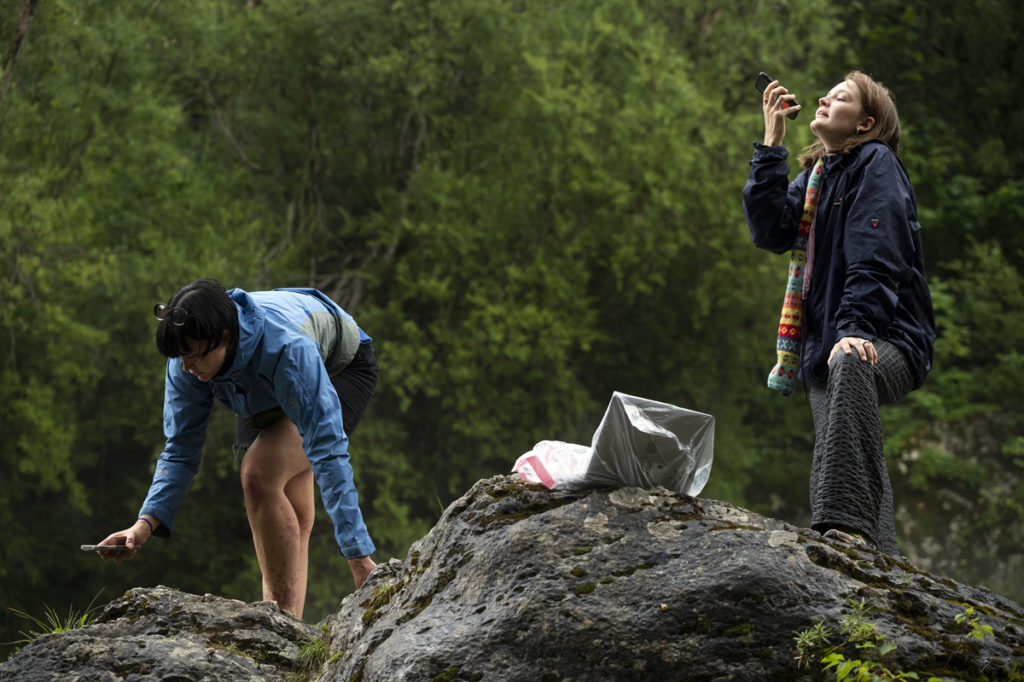
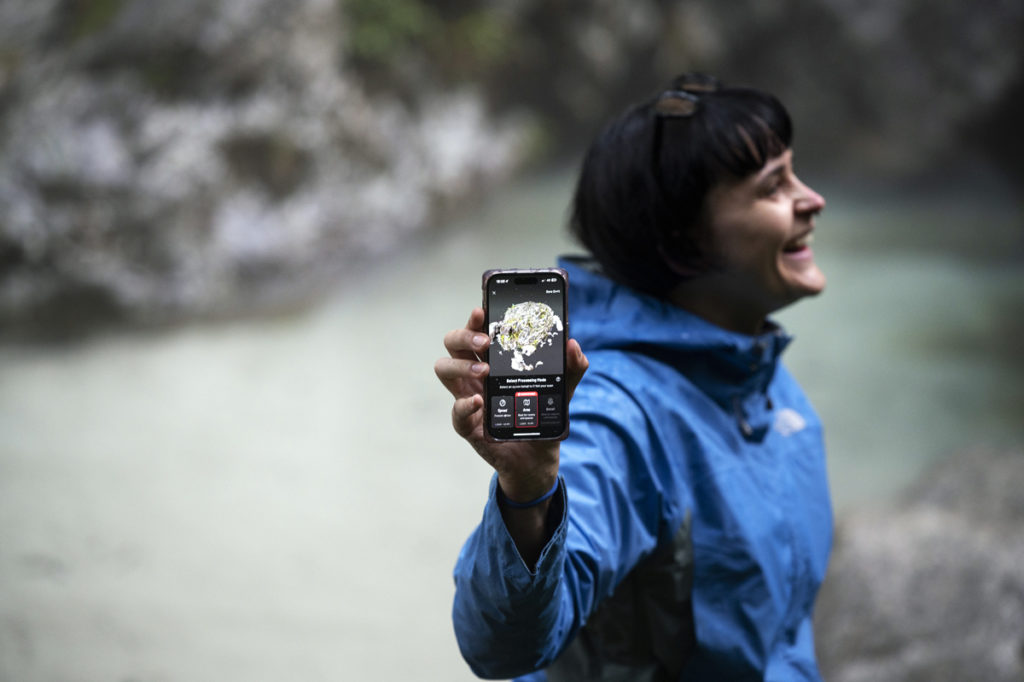
In the evening, the live coder community continued working on their PIFproject of infecting the participants with this artistic practice. Blaž organized a live coding workshop in the Hydra environment, which you may remember from last year’s PIFlog. He was clearly successful in this effort, since all the workshop participants later showed off their newfound knowledge at the From Scratch PIFevent, where they visualized the music of participants from Lina’s workshop and the seasoned live coders.
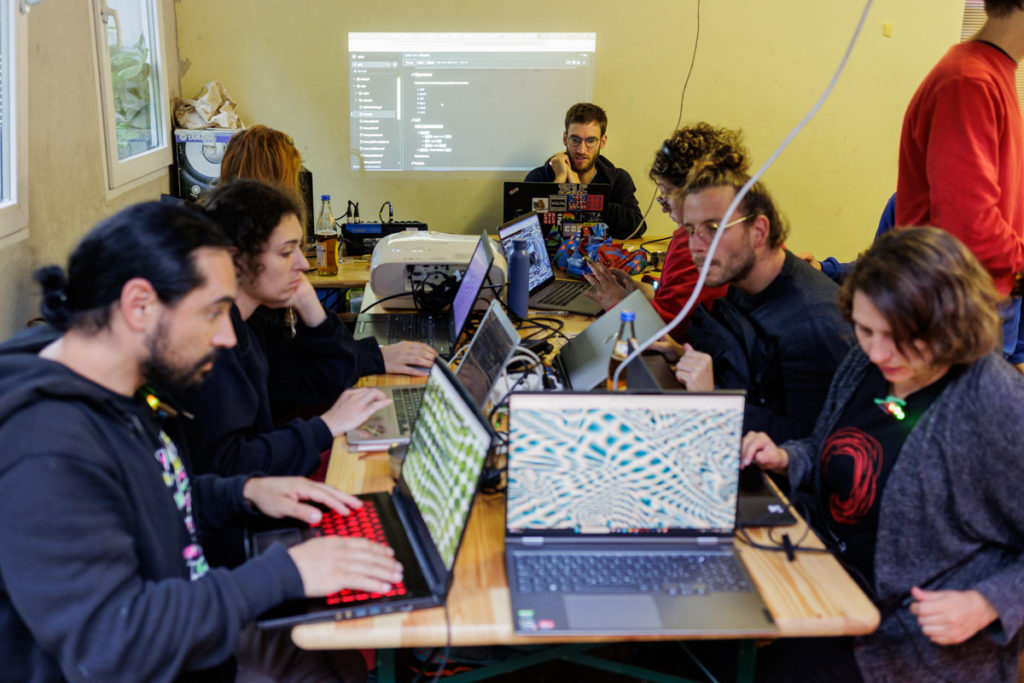
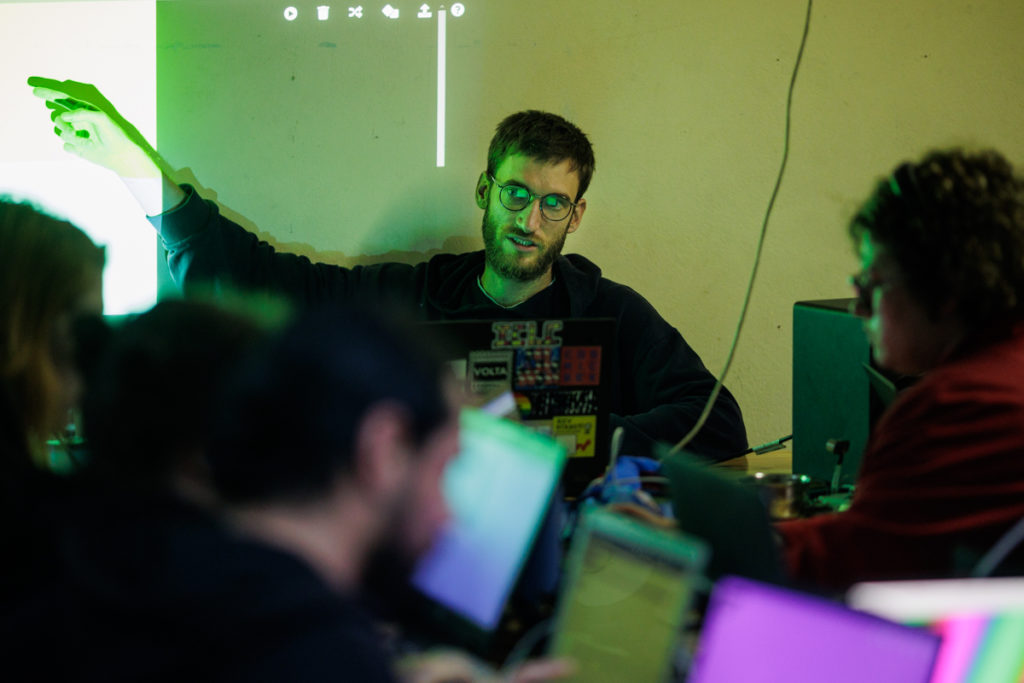
The evening slowly faded into night. Since it’s late, and your reporter has packing and tidying up to do tomorrow, she’ll try to summarize the events in a concise sequence of simple sentences and words, followed by a series of photos: From Scratch with 15 performers, Ewen Chardronnet’s amazing set and a b2b with Blaž, community bonding, a cocktail party, a fierce tarot fight, an epic battle with the level and the perimeter of the PIFlake. Good night!

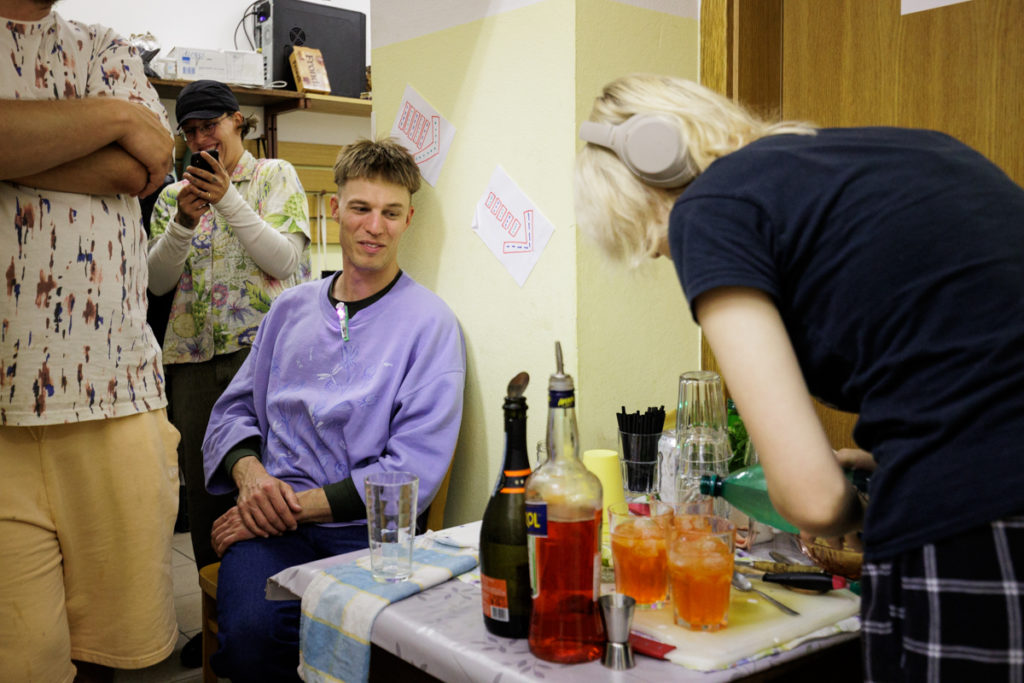
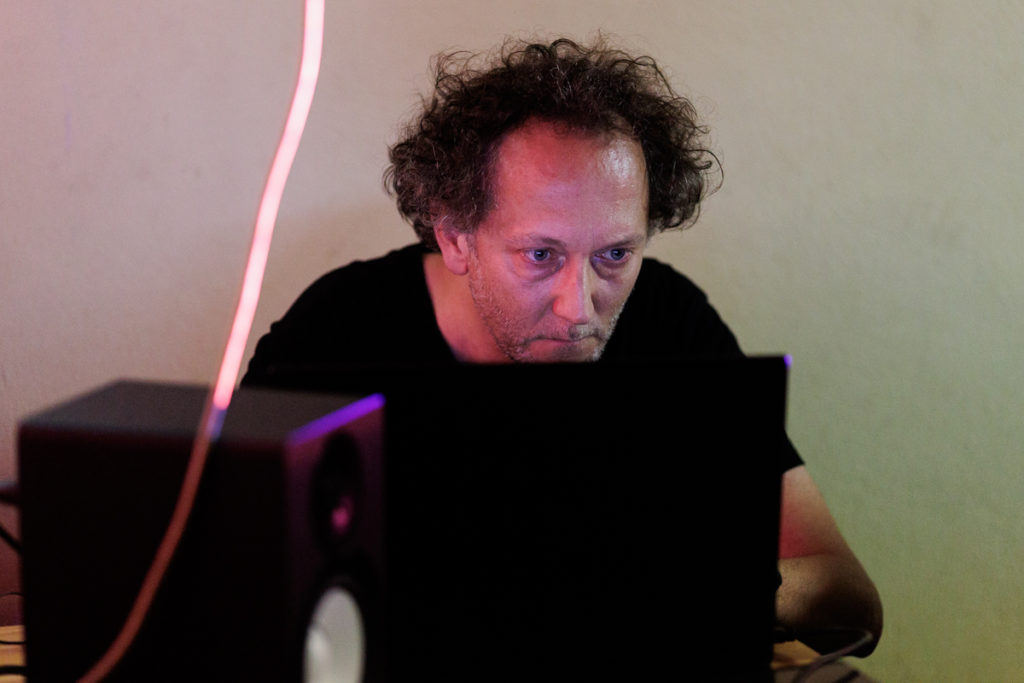
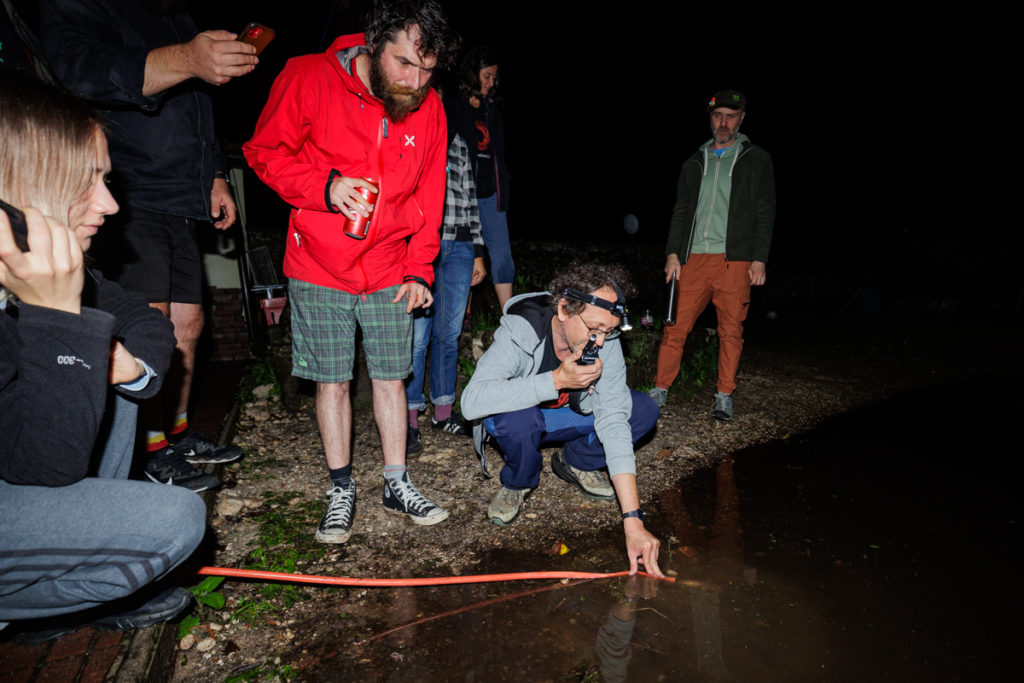
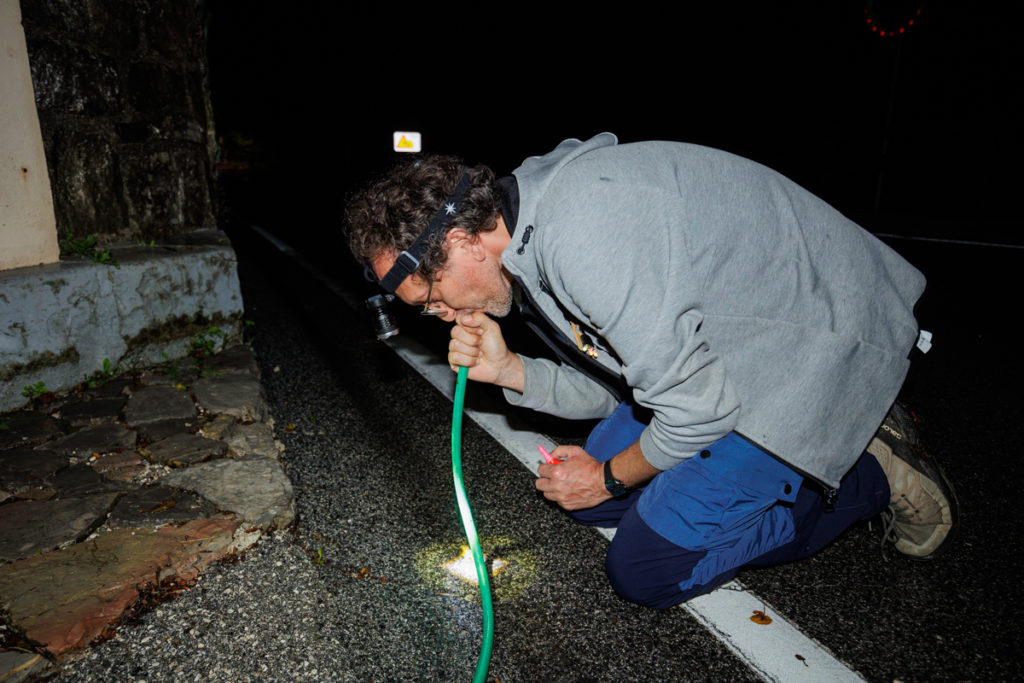
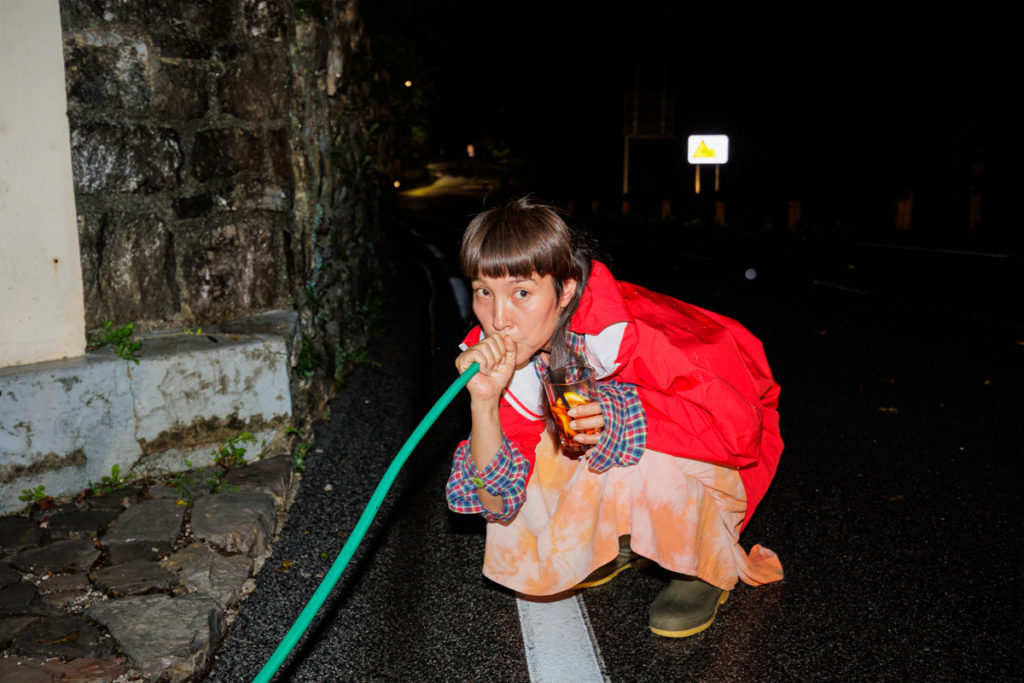

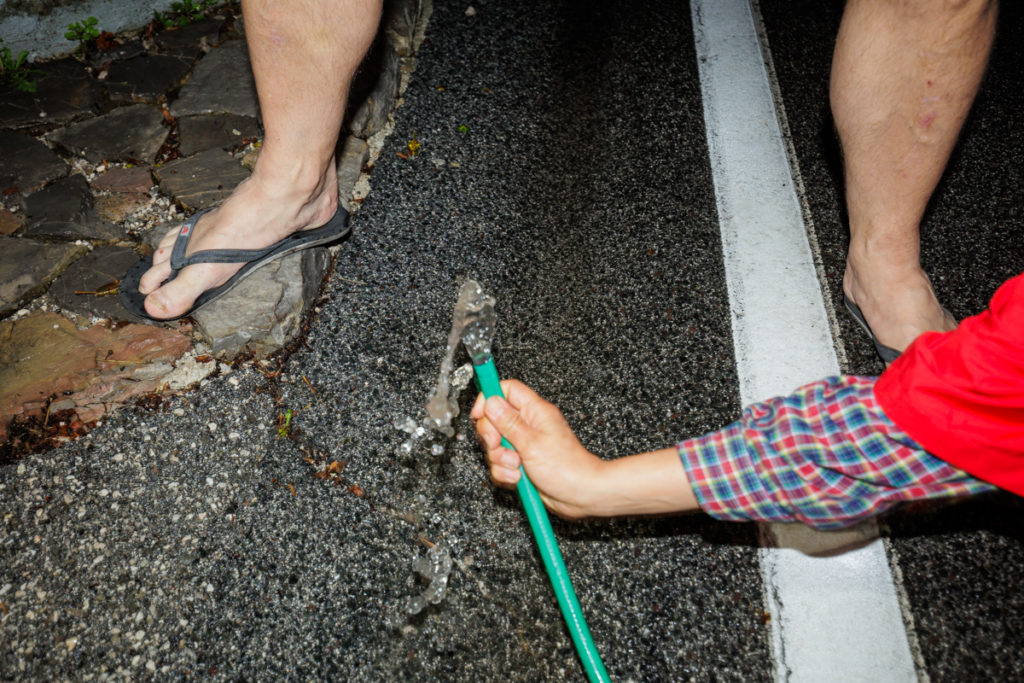
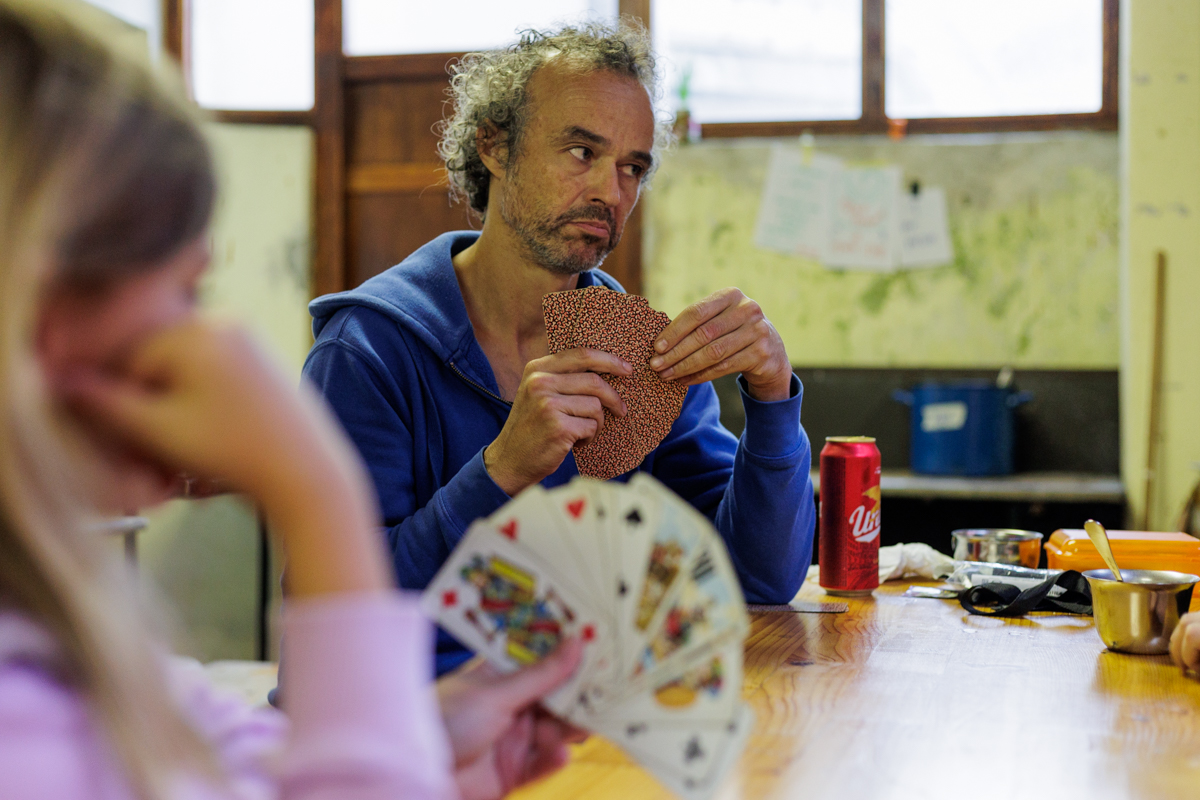
Epic PIFbattles. Photo: Katja Goljat, Matjaž Rušt
Open Saturday is cancelled!
Due to obvious (weather) reasons Open Saturday is cancelled tomorrow. PIFcamp is standing (for now), but people in other parts of Slovenia were not so lucky. Go help them if you can!
First we take the Krn Lake, then the Kluže Fort //PIFwednesday
Since one-woman-blog-team hasn’t found the words yet to describe yesterday’s epic PIFday, here comes a photo dump (and two captions). More words tomorrow!
Traditionally, the first part of Wednesday at the PIFcamp is reserved for the hike to Krn Lake. Getting up at 6:00 is not the most popular activity, but every year, a fair number of PIFlars choose to participate – our favourite breakfast team, who open their sandwich shop on Tuesday evening for the occasion, reported 12 orders. Hikers were led by Jaka from Ekologi brez meja (Ecologists Without Borders), who is also in charge of the waste management at this year’s PIFcamp, keeping a watchful eye on (and weighing) the amount of different types of waste. Based on the data collected, he will propose guidelines for future improvements.
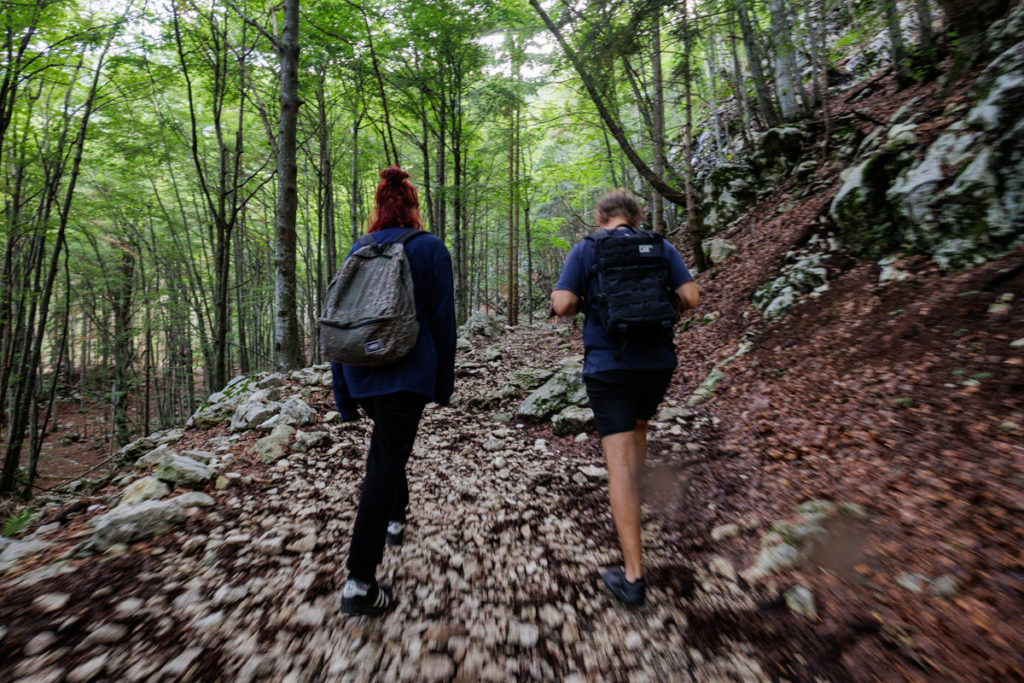
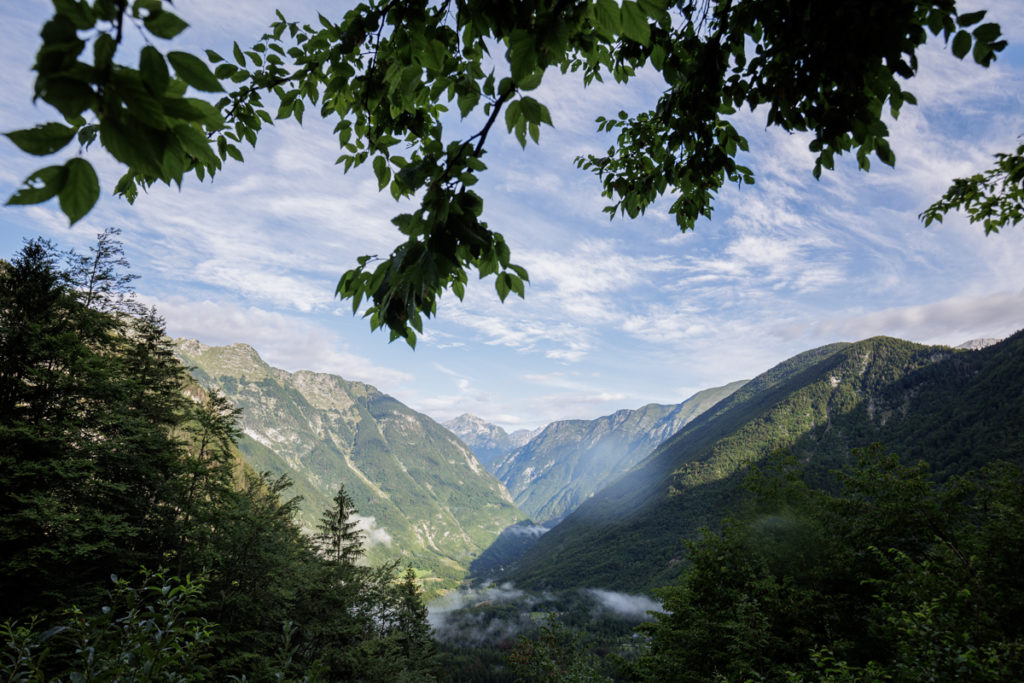
Your reporter was helping with preparations for the PIFconcert at the Fort Kluže on Wednesday, so she was unable to attend the hike. Luckily, PIFlars are just one step away at all times. We talked to Oriol, who enjoys going to the mountains, and he was very pleased with the trip. The group walked the not-too-difficult route from the Klement Jug mountain lodge in Lepena to the lake in just over two hours, before taking in the view of the beautiful Krn Lake, stopping for a coffee in the mountain lodge and signing the visitors’ book. The return journey took a little longer, but our mountaineers still managed to reach the base PIFcamp in time for lunch.
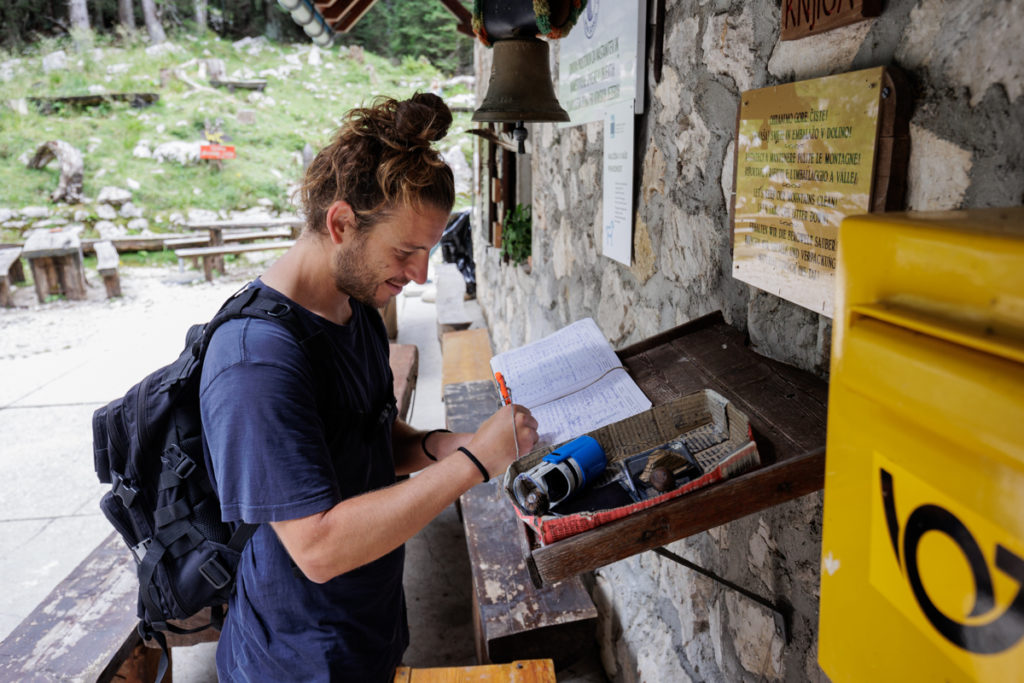
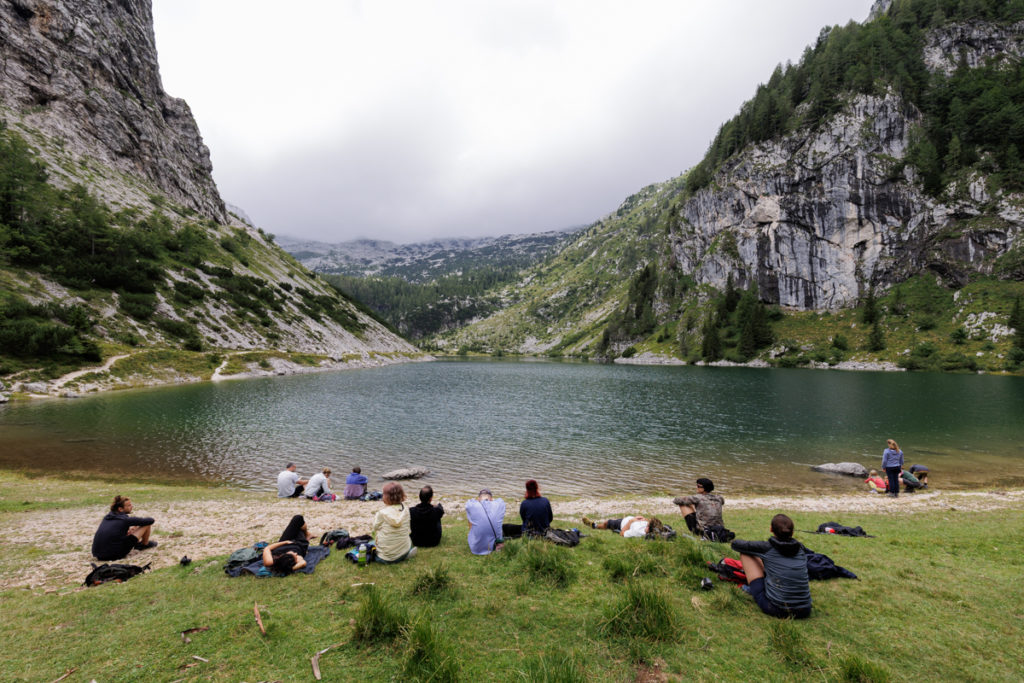
On the initiative of Jani Pirnat, another PIFcamp familiar, part of the organizing team decided to move one of the numerous jam sessions, which take place on the PIFterrace, to the walls of the walled courtyard of the Fort Kluže. The event, held under the title PIFconcert and Algorave: Lasers, beeping and lightning, featured no less than 14 performers. The majority of the audience was made up of PIFcamp participants, but we also noticed a few dozen external visitors. The courtyard of the Fortress is a beautiful venue, but this was not the reason why the event was a success. We should thank the wonderful performers right at the beginning of this report, for their music and visuals that transported us to different dimensions.
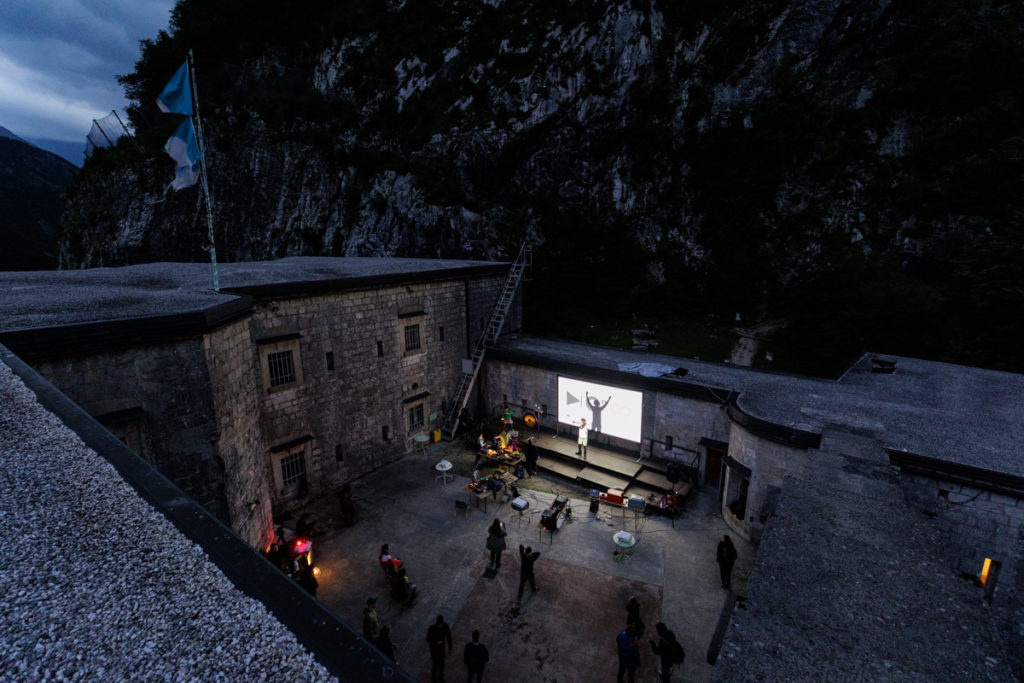
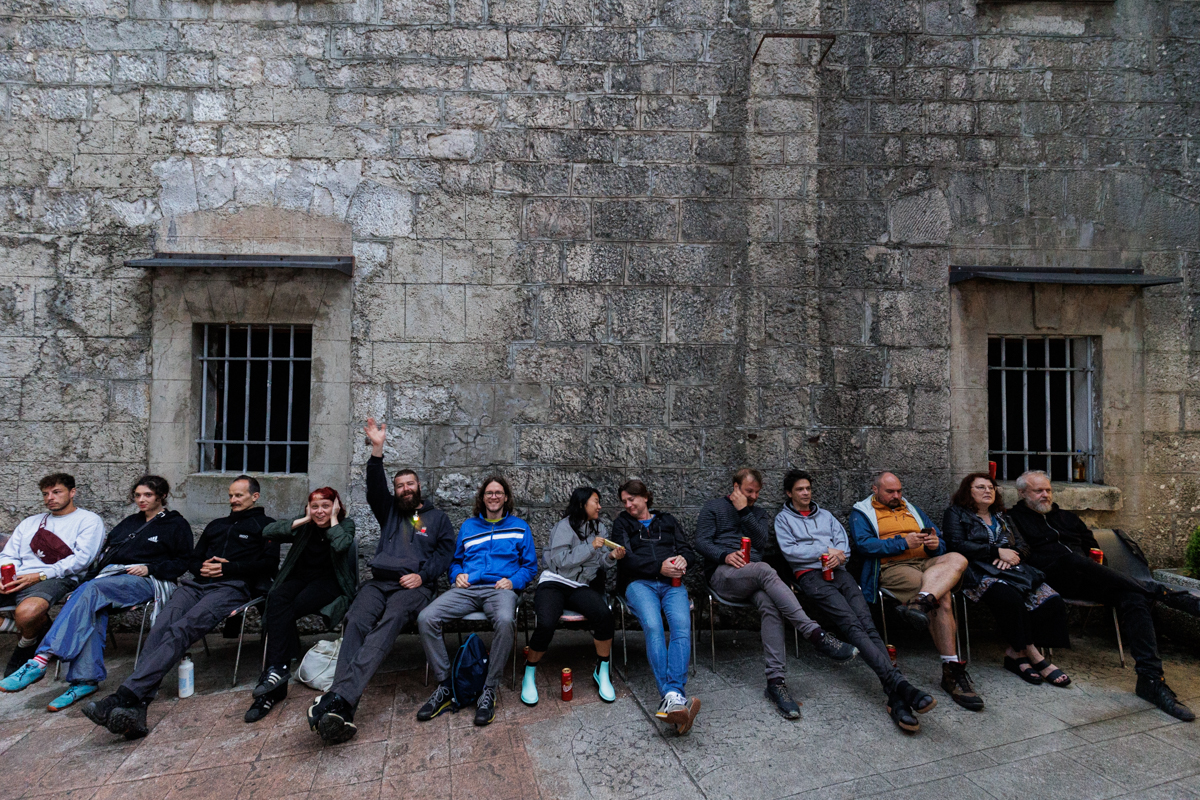
At 9 pm sharp, the stage was taken over by the first first-time trio of performers: multi-instrumentalists Rob Canning and Robbie Hopper were accompanied on live coded visuals in P5LIVE by Julia Múgica (aka Dr. Ju). Another premiere duo featuring Tilen Sepič and Linalab (Lina Bautista) followed with a modular synths-live coding combo. Lina used the Mercury environment for the first time in a public performance, and we must say it didn’t show. Halfway through their performance Hansi3D and Jerobeam Fenderson climbed one of the walls of the fortress and covered the interior walls with multi-colored laser nebulae.
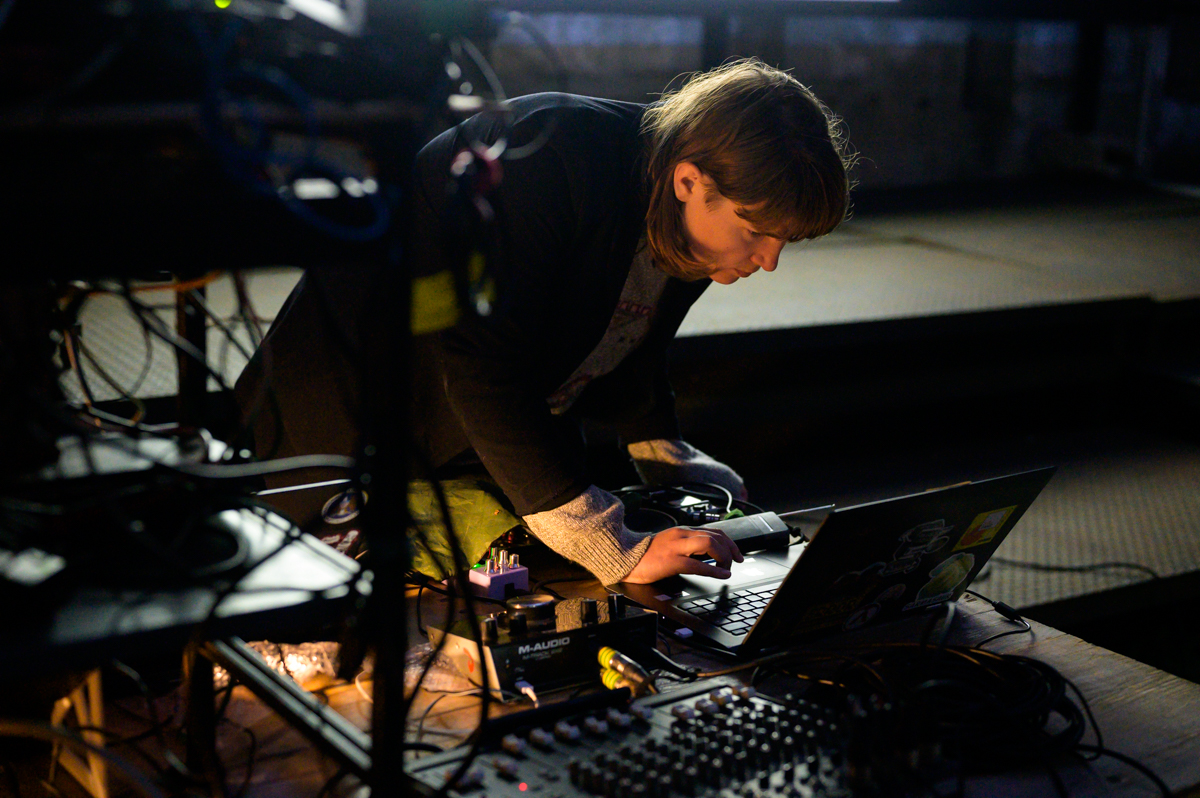
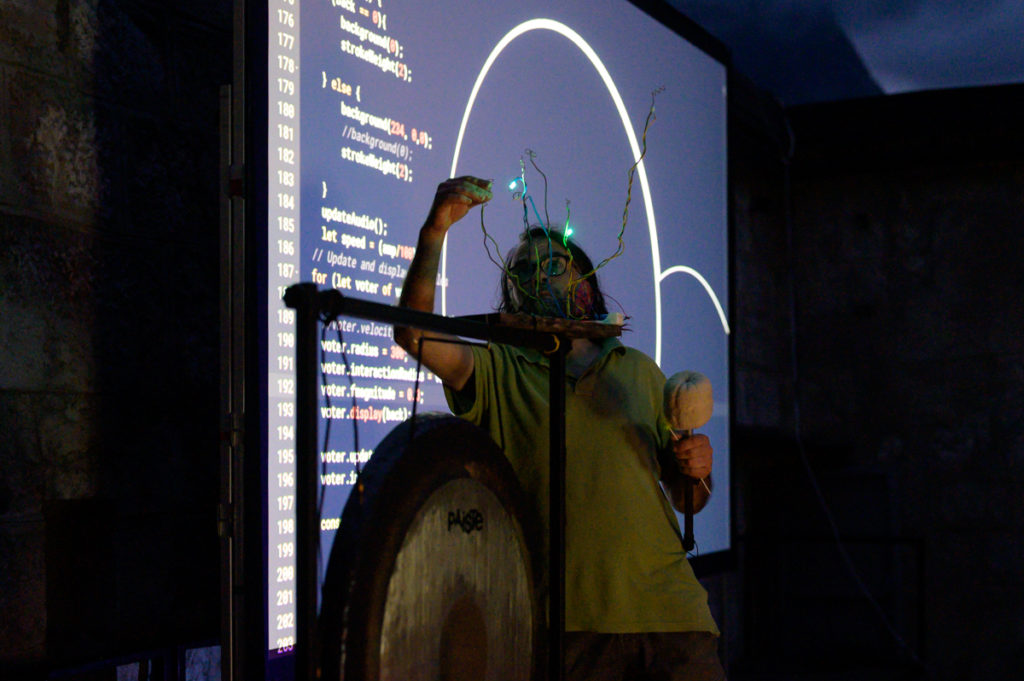
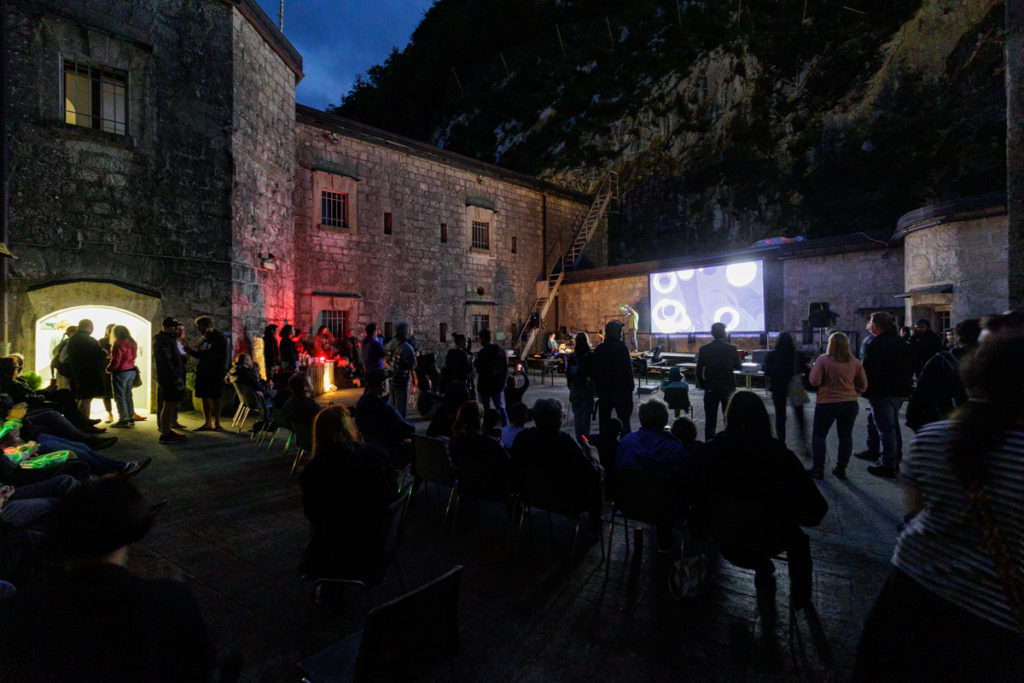
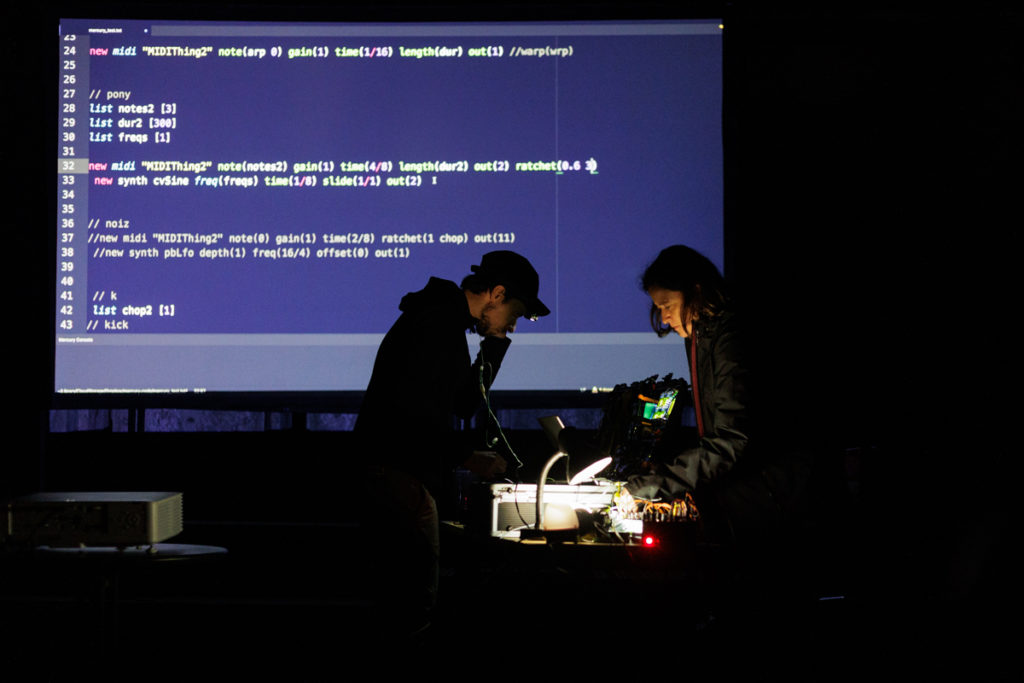

The audience was already well warmed up when Oscilloscope Music turned their lasers in the opposite direction, facing the hill below Fort Hermann. Judging by the gasps, cheers and applause during their AV set, the audience was nevertheless caught off-guard by their dazzling show. One of the participants posted a story on her instagram profile during which we managed to overhear the following priceless comment: “What’s thaaaat?!! I just found myself in 16 dimensions at the same time!”

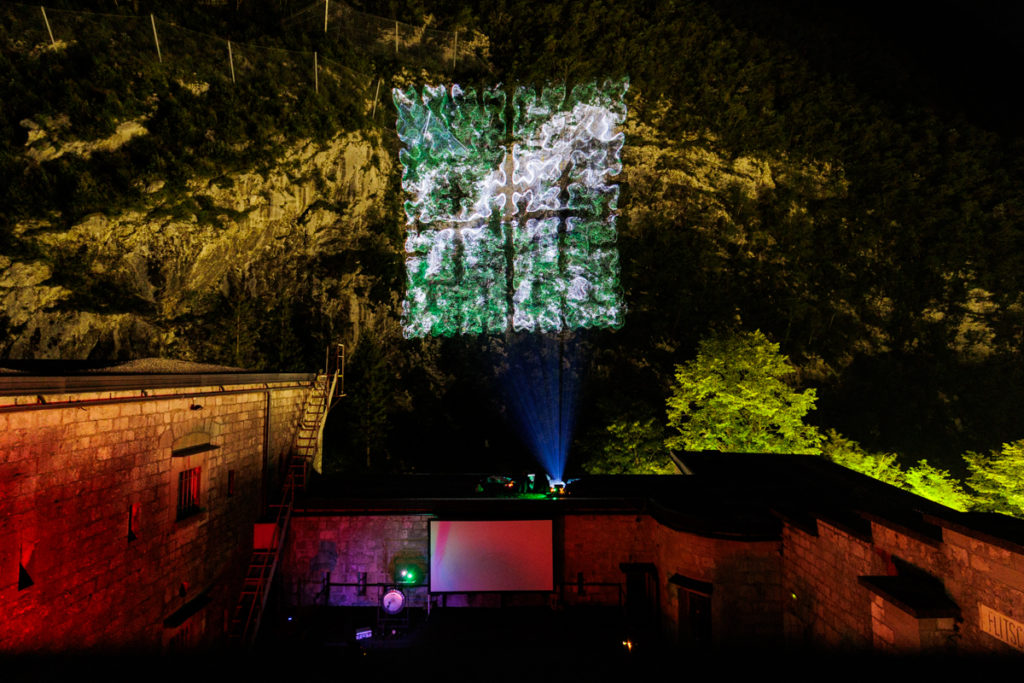
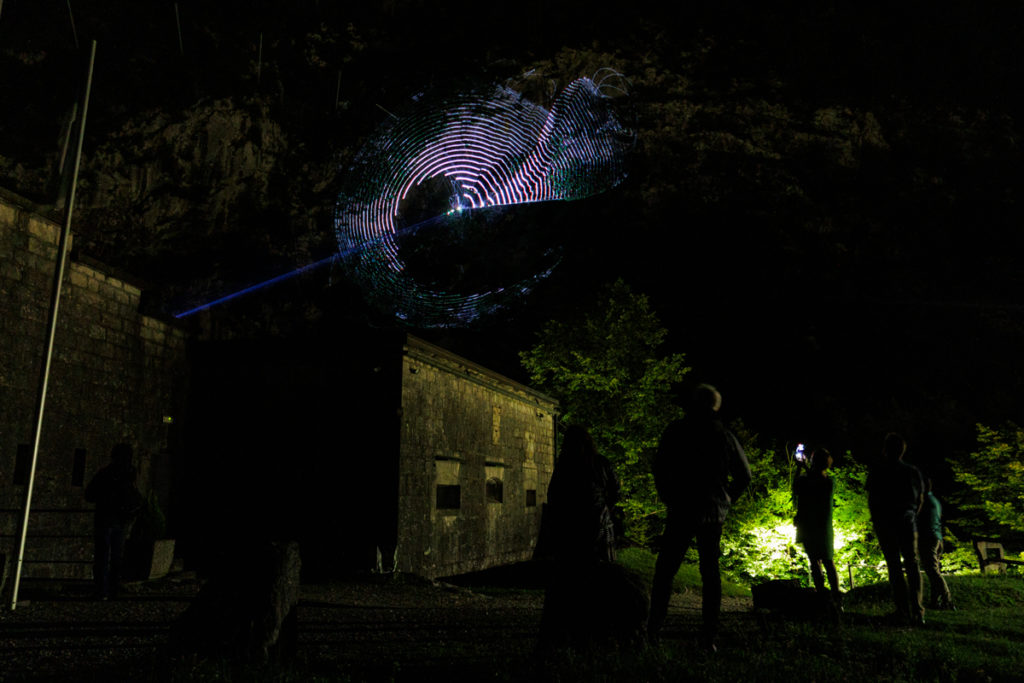
After the dynamic lasers duo, another PIFsupergroup took the stage, this time consisting of Manu Retamero aka ëgg and Tina Tonagel, accompanied by Sophia Bulgakova‘s digital-analogue visual delights. The last two performances were yet another treat for live coding fans: the supertrio of the Toplap Barcelona collective – Iván, Roger and Niklas – showed off their programming and performance skills and, of course, their screens. Iván codes his music in SuperCollider with the assistance of AI, Niklas performs in his own Mégra language, while Roger used Animatron, a 2D animation live coding environment he co-created with Glen Fraser, for the visuals. Laurent, who prepared his AV set in FoxDot, provided the perfect finale with exactly the right amount of rhythms, repetition and melody. Wednesday didn’t exactly provide a traditional end to the day, but a glance at the timetable announced a much more traditional Thursday – workshop on workshop on workshop. A true classic, which of course we will also report on.
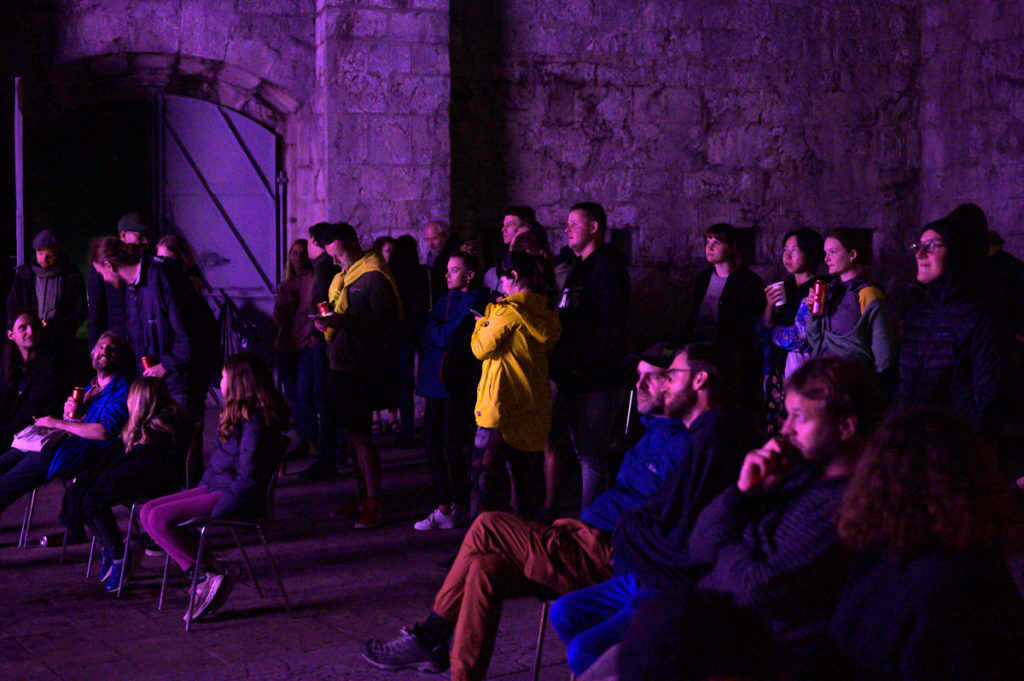
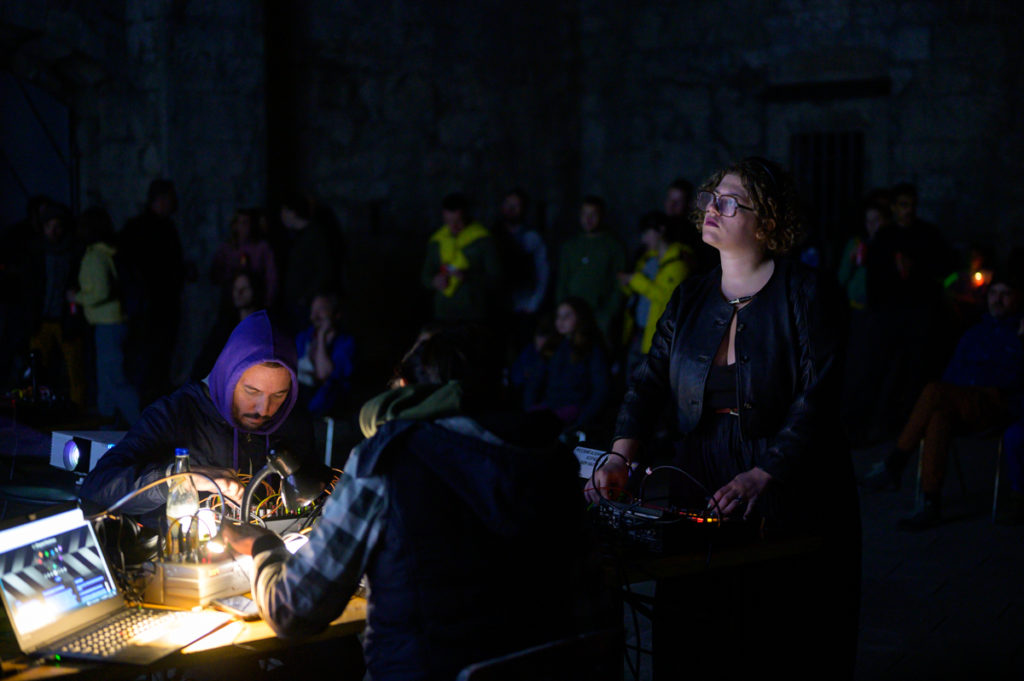
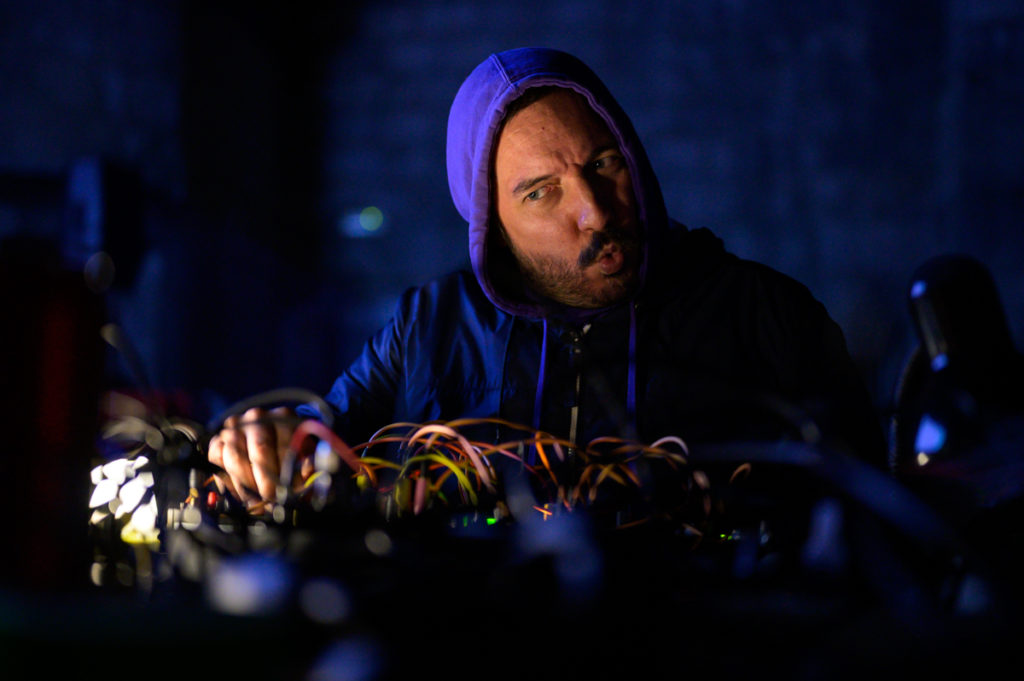
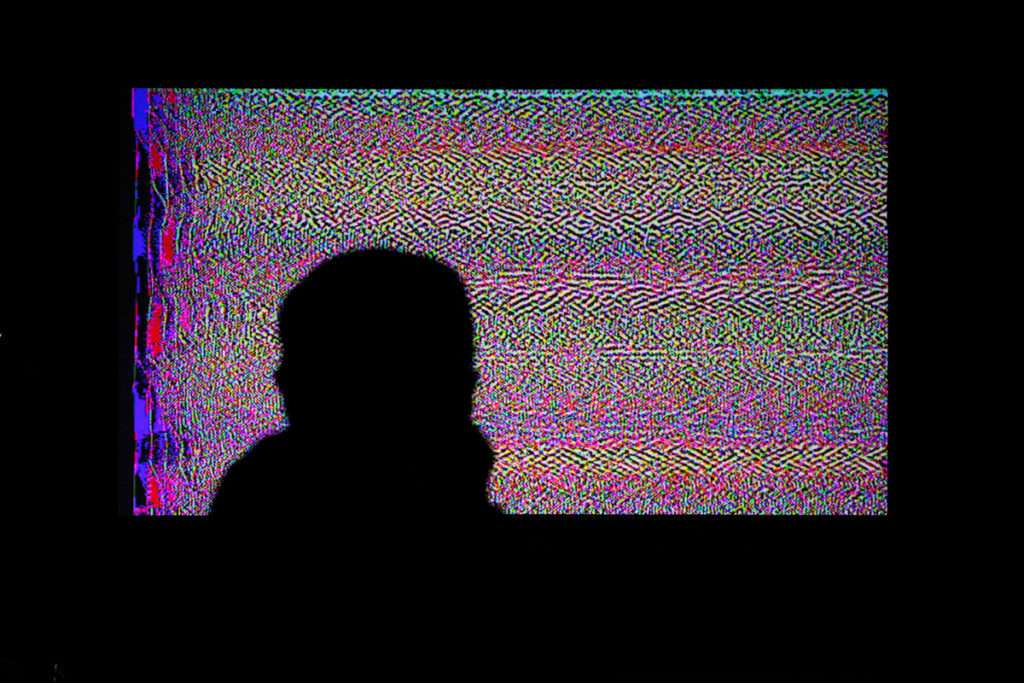


Loading…………………………………….
please wait. PIFlog entry coming soon.
